Downloaded 4,983 times
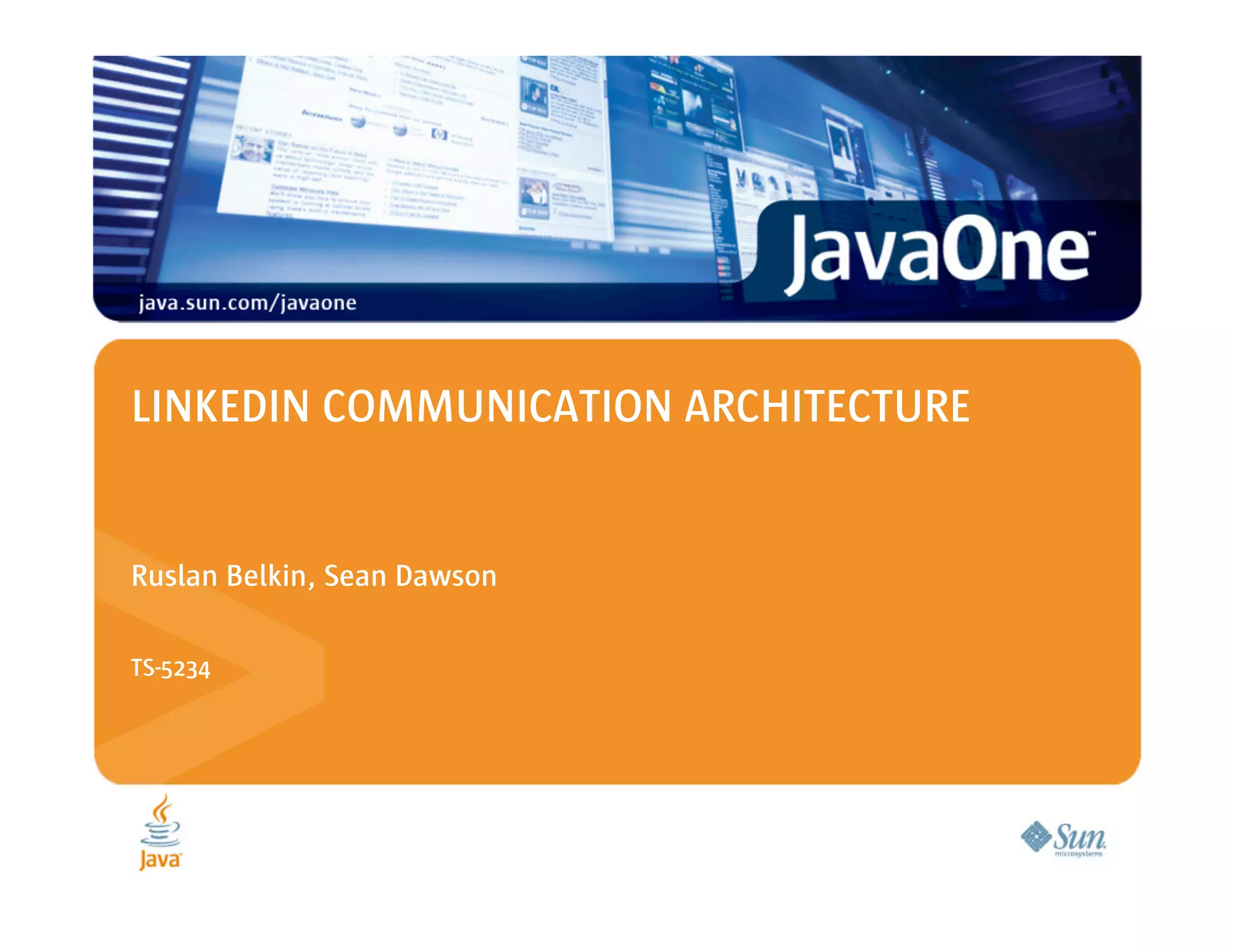
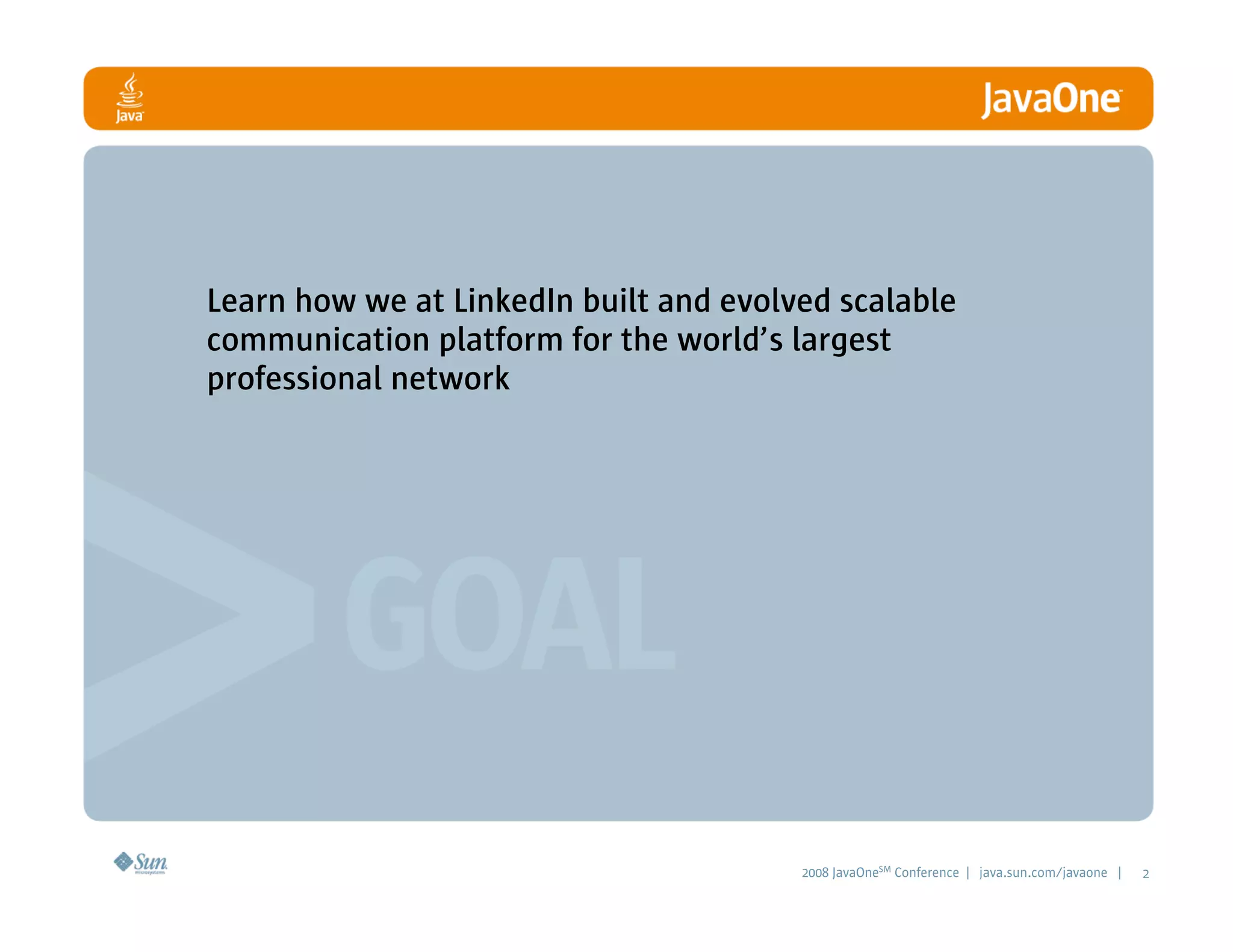
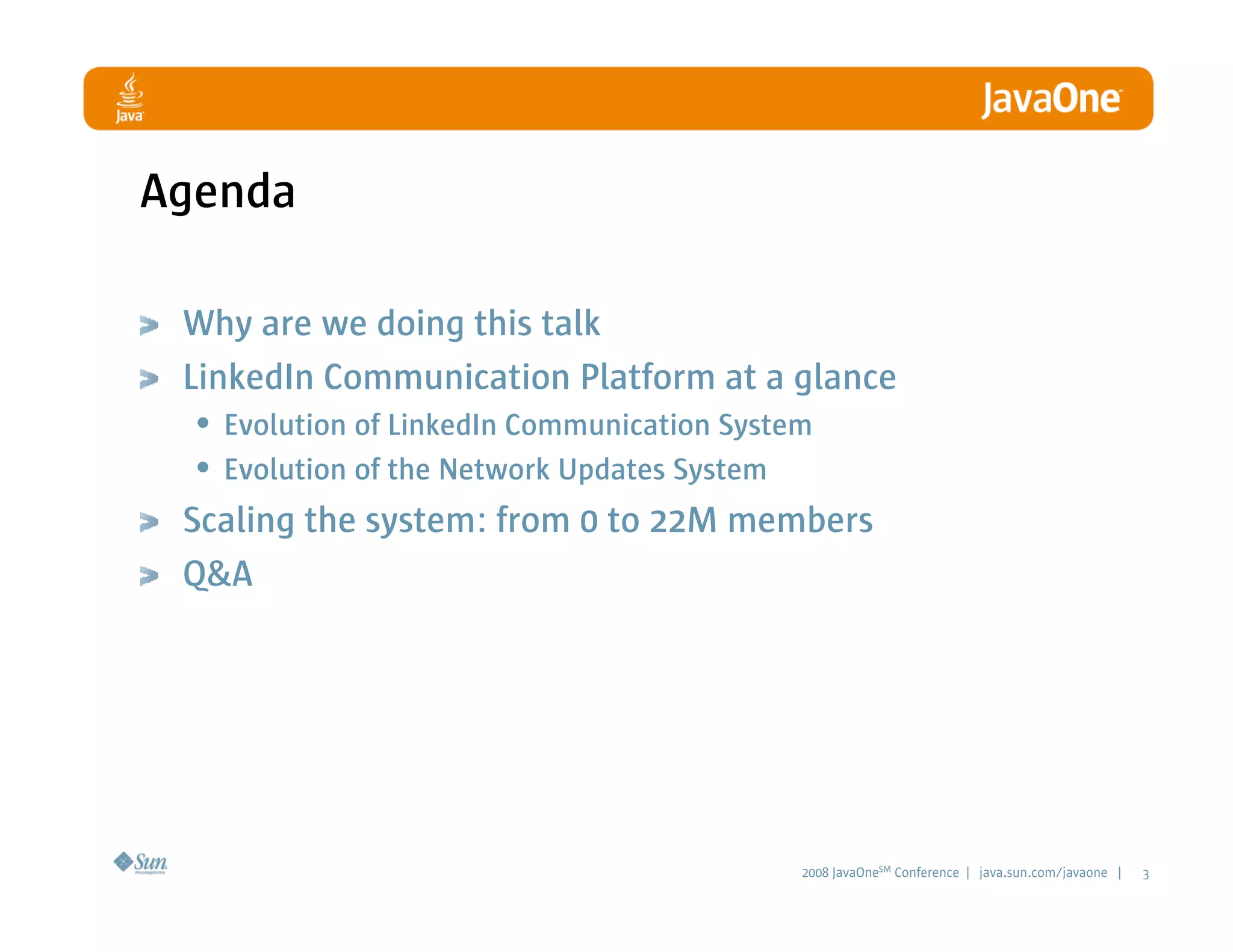
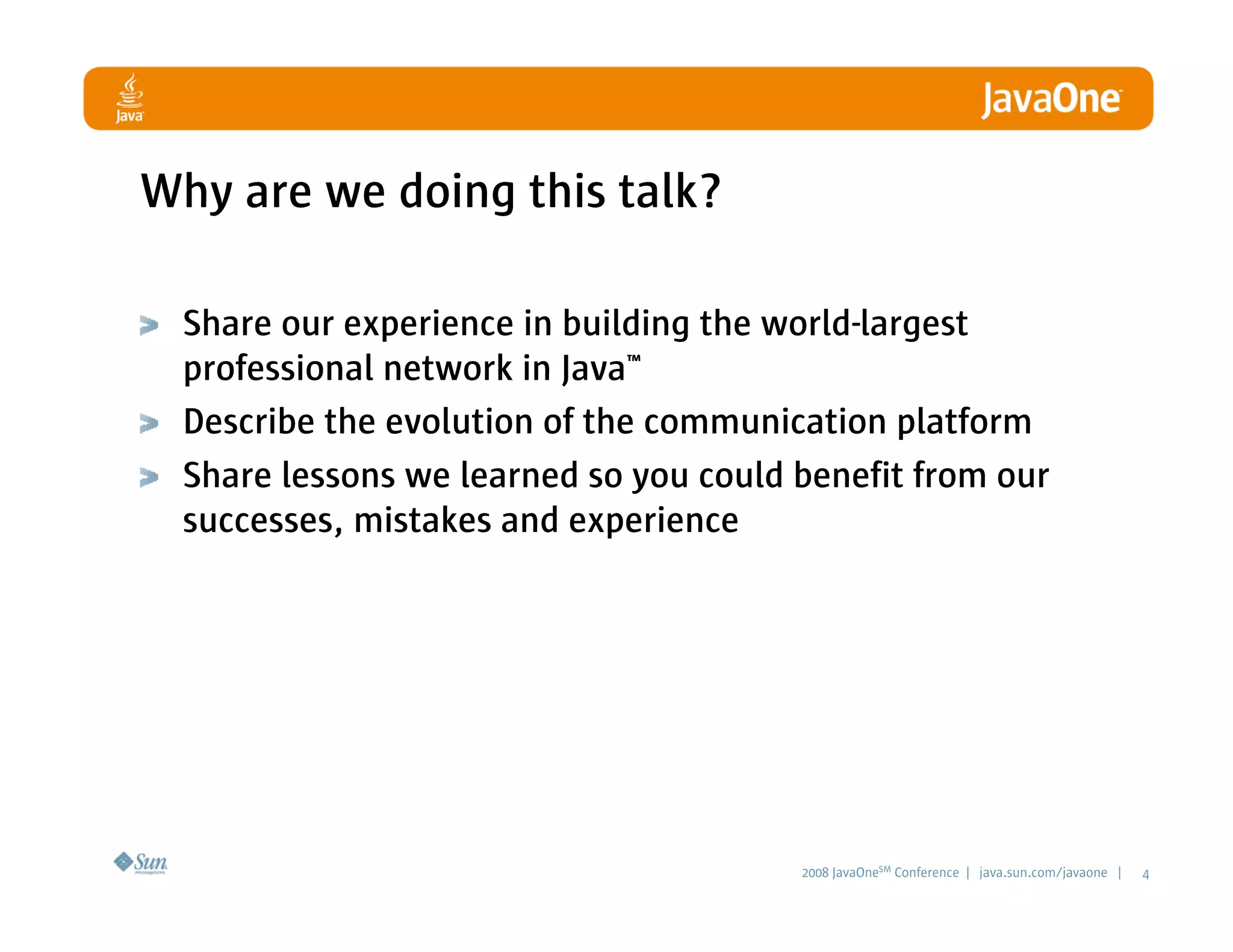
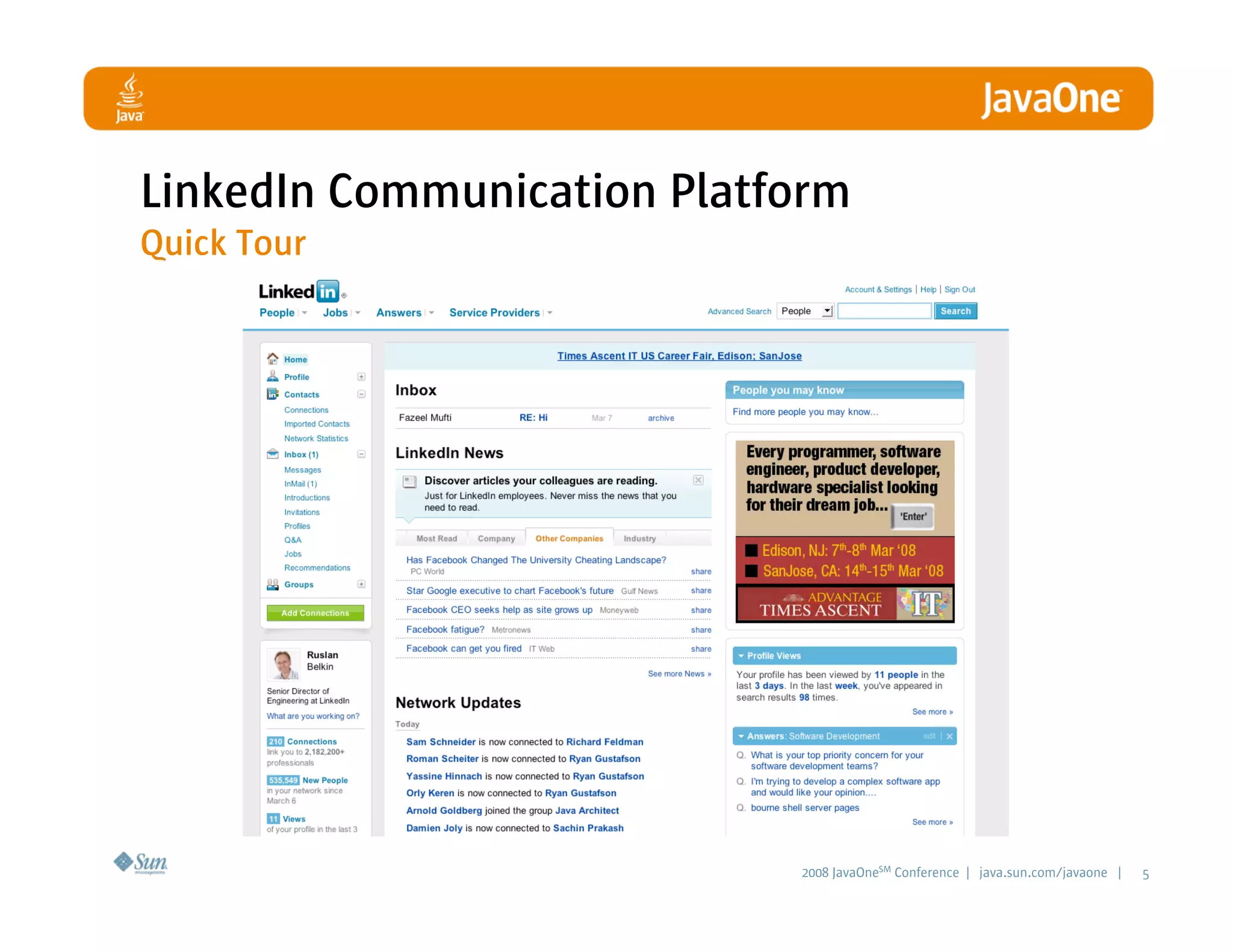
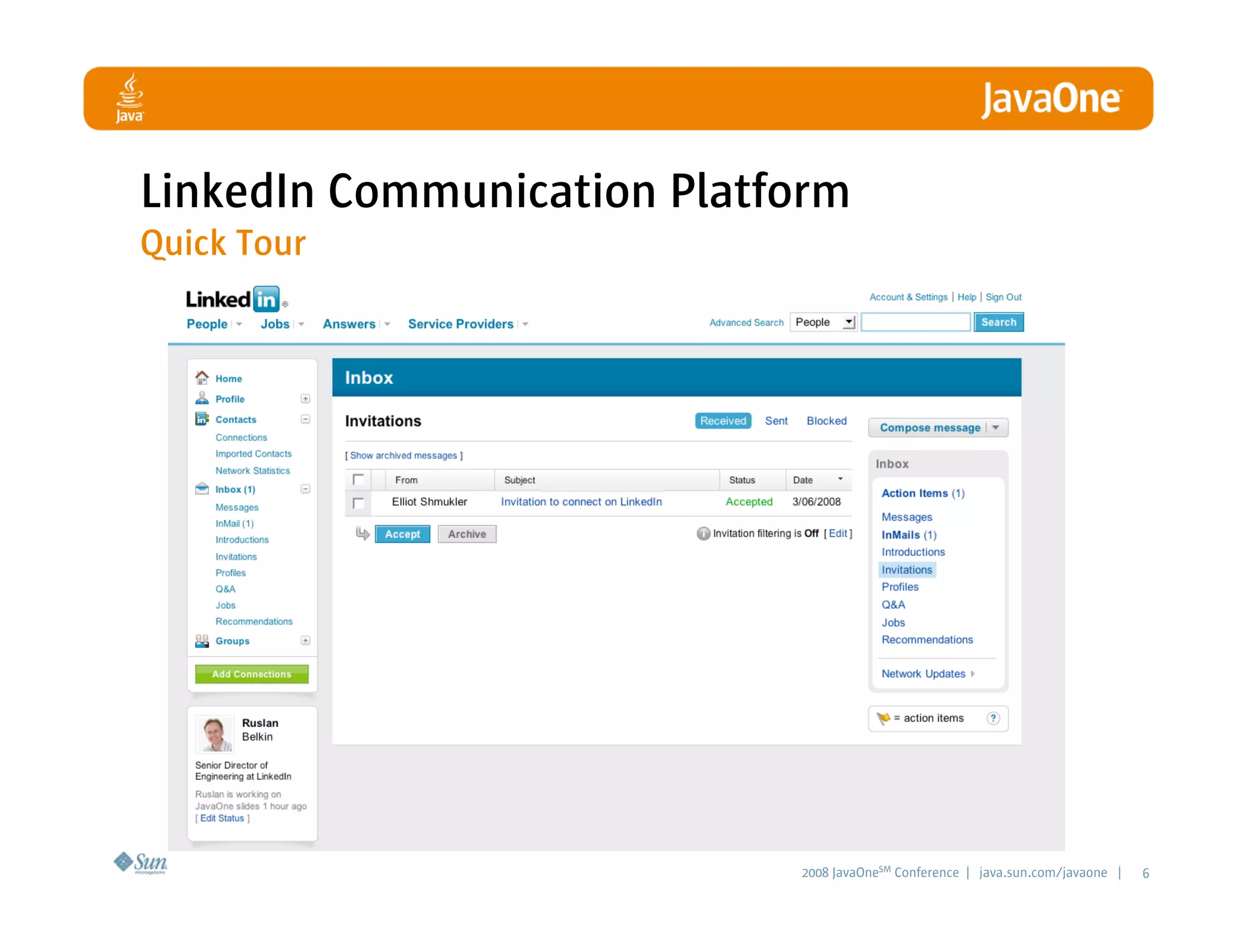
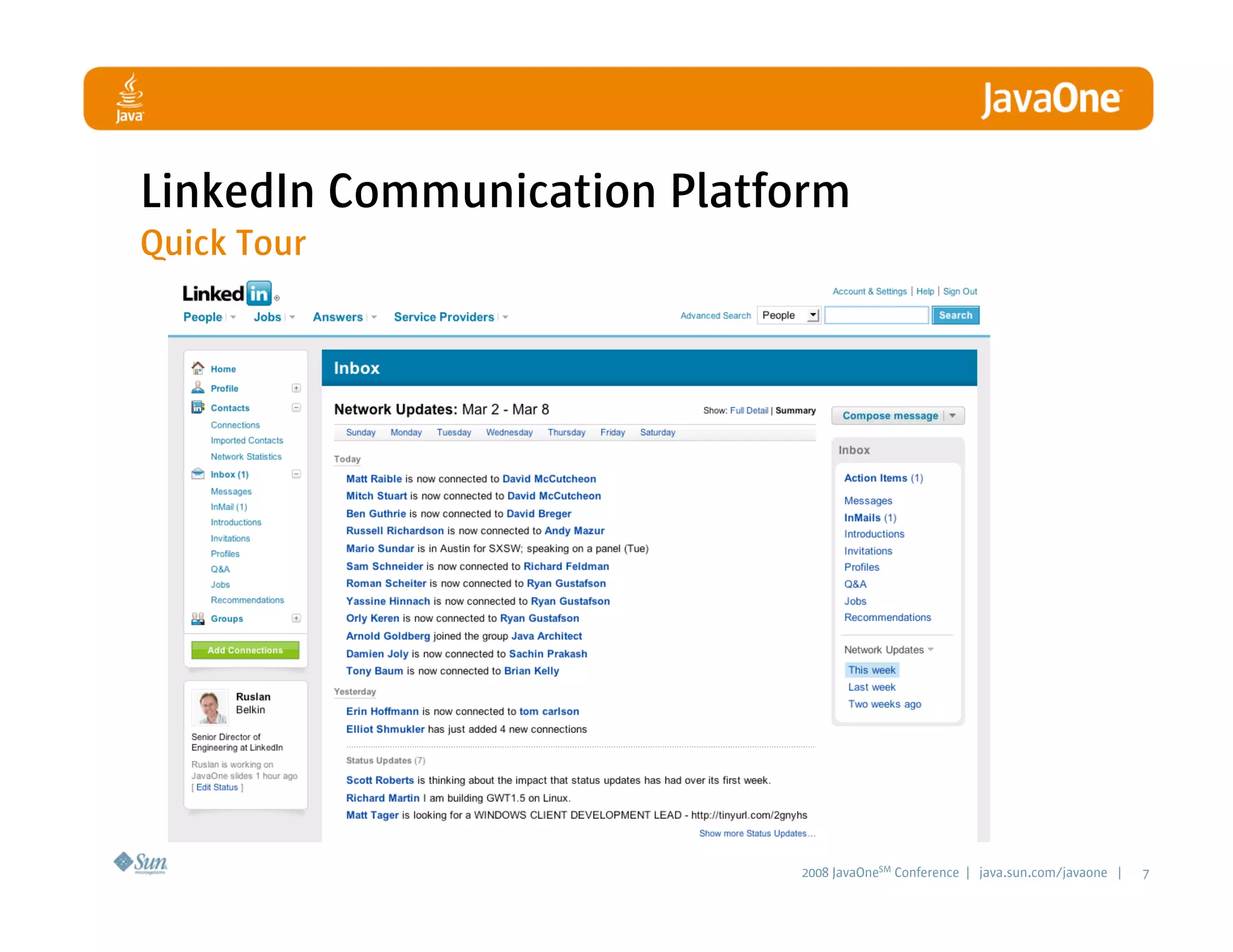
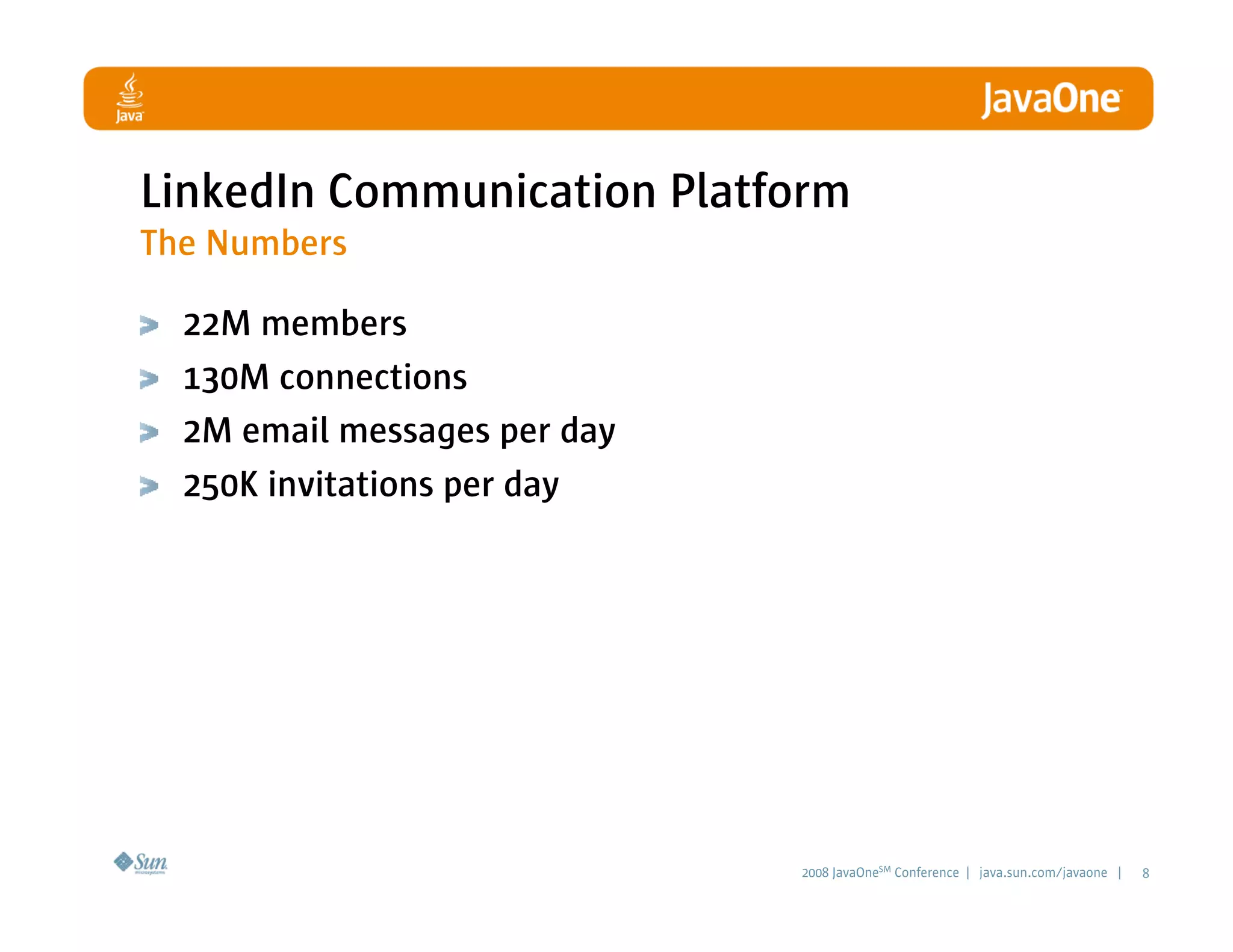
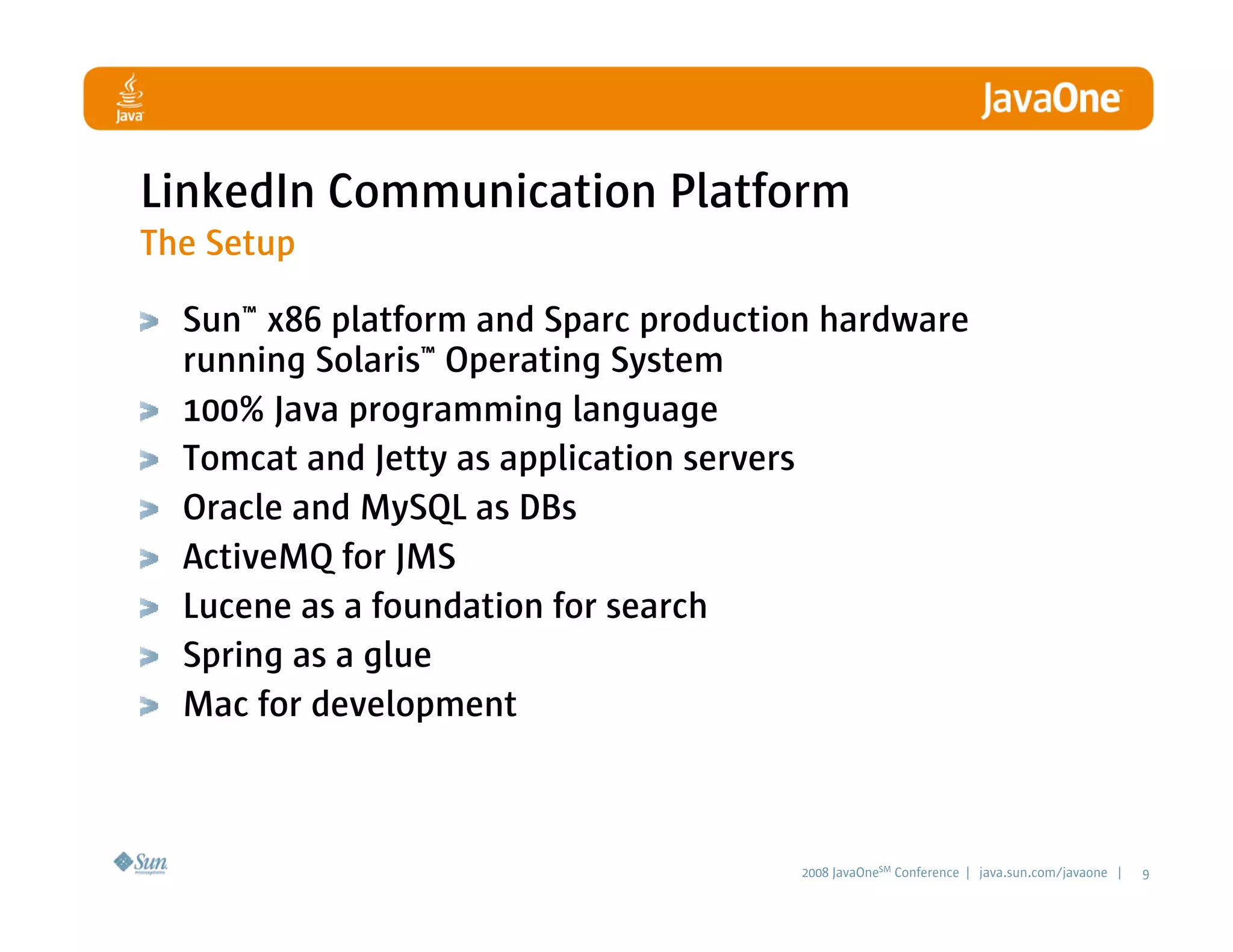
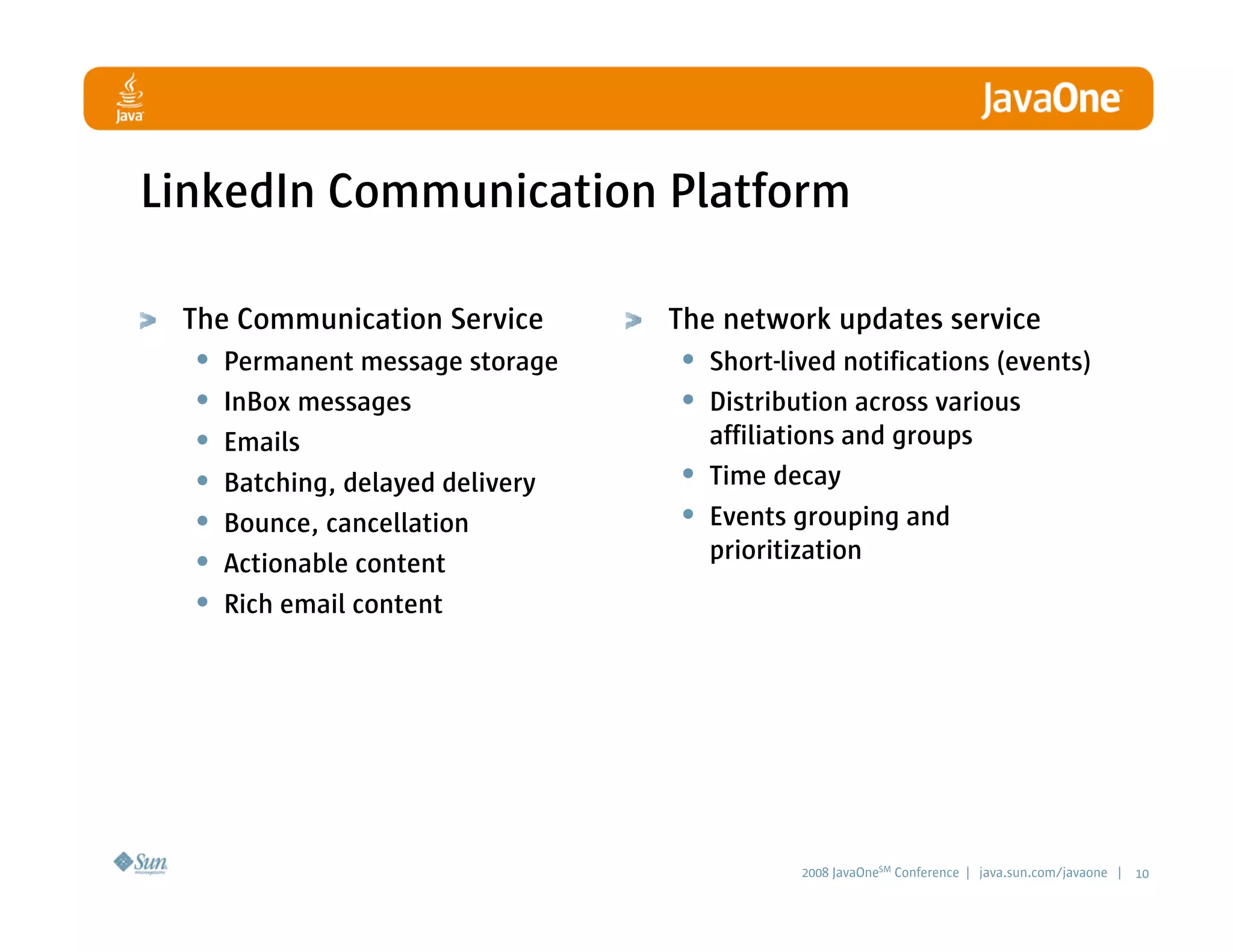
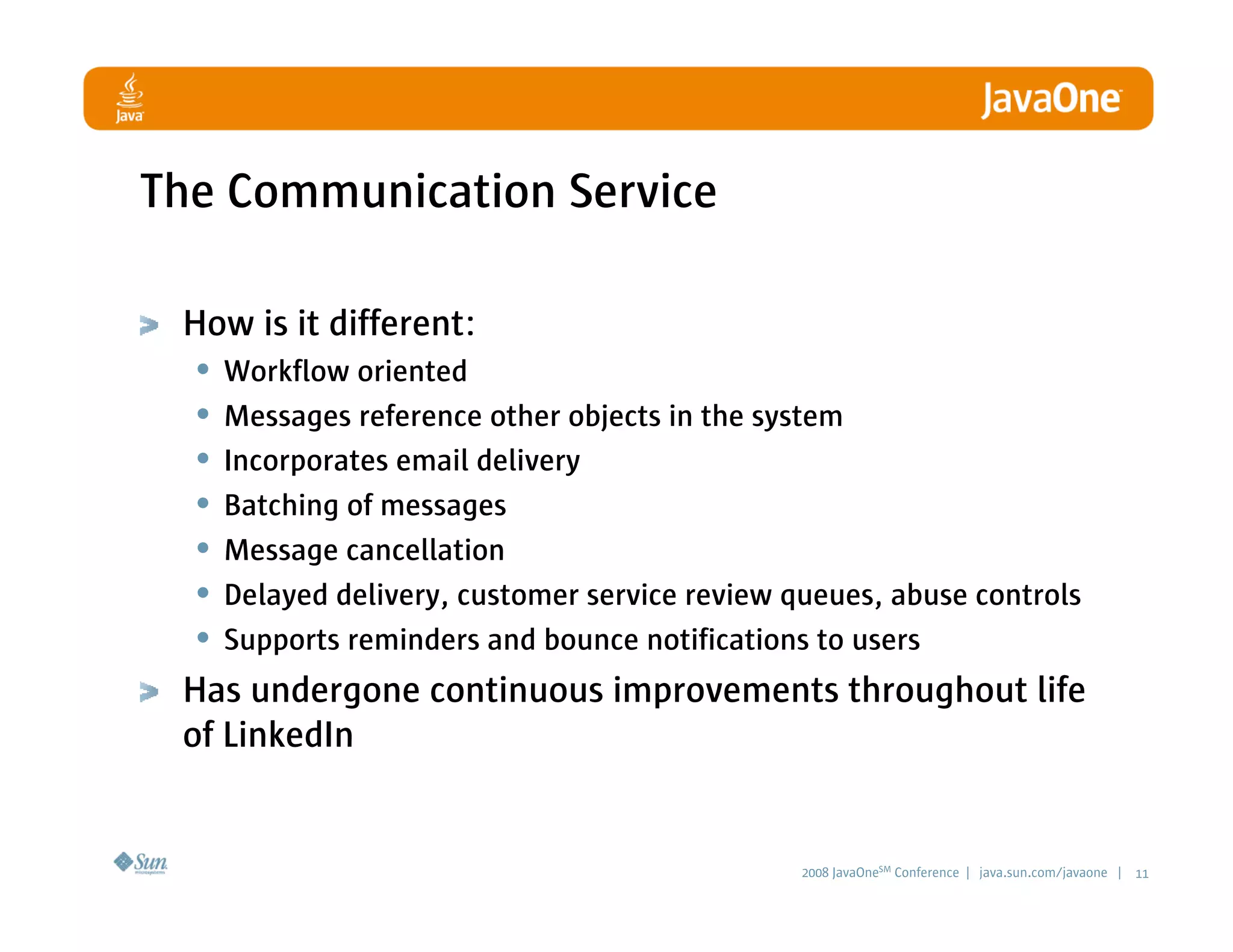
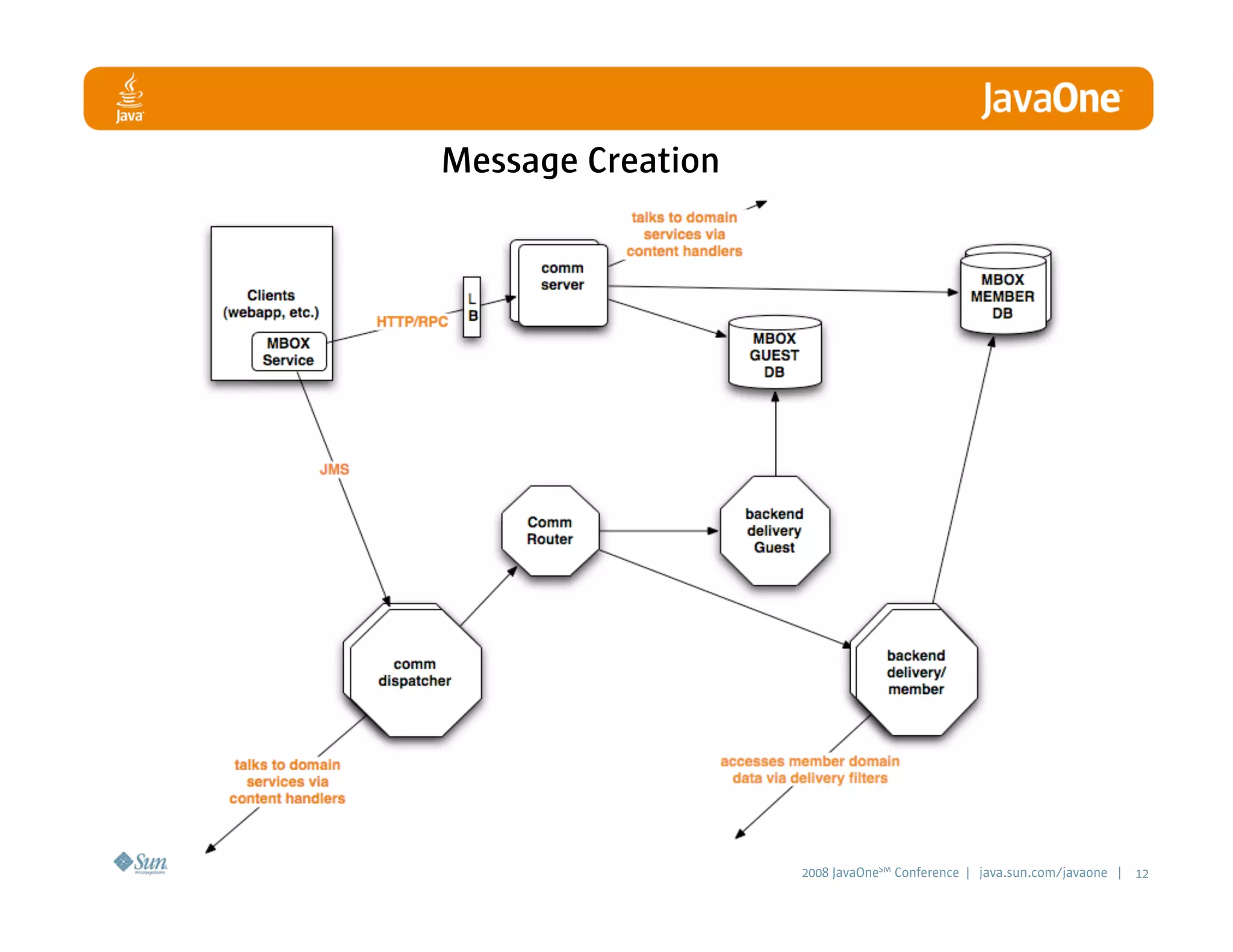
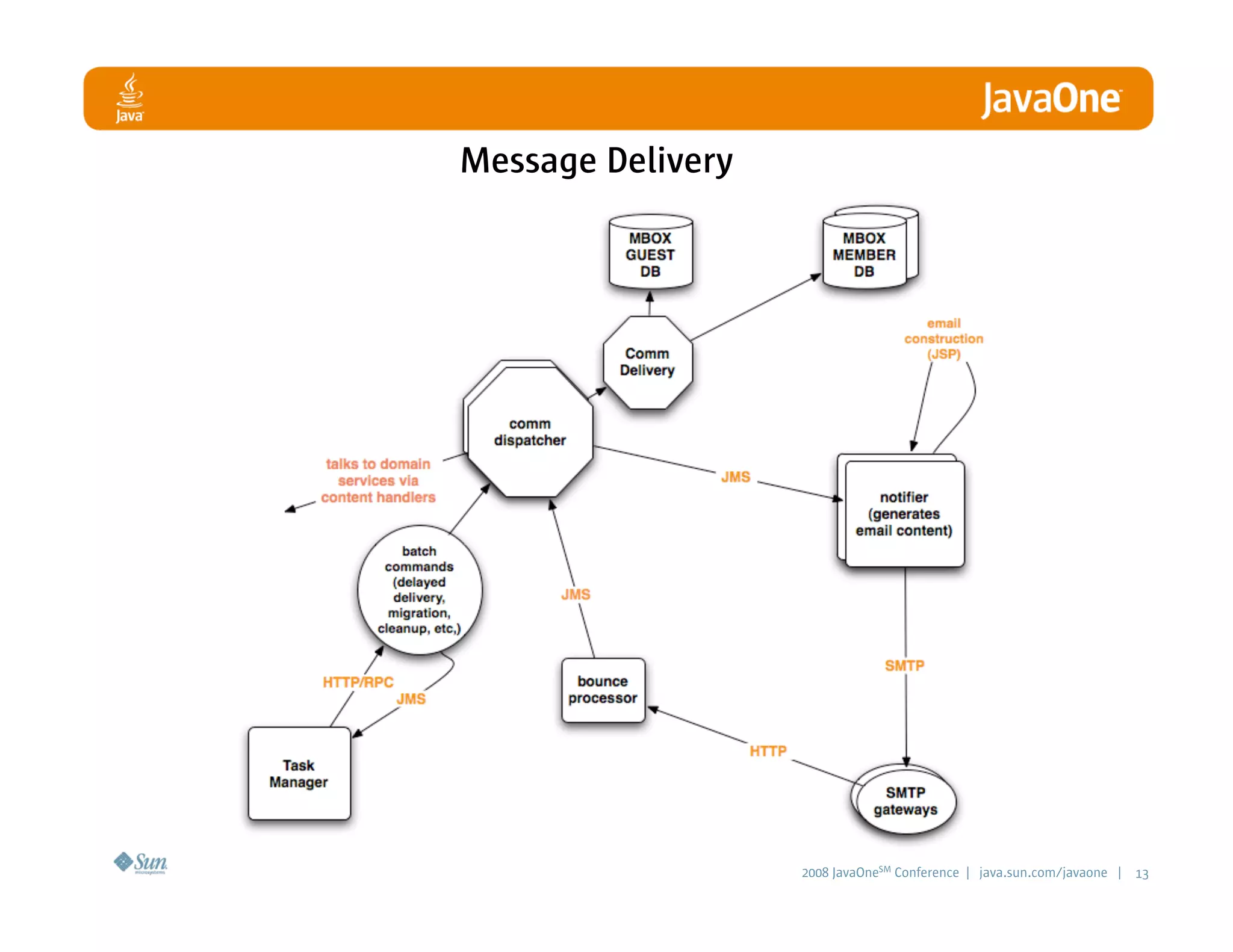
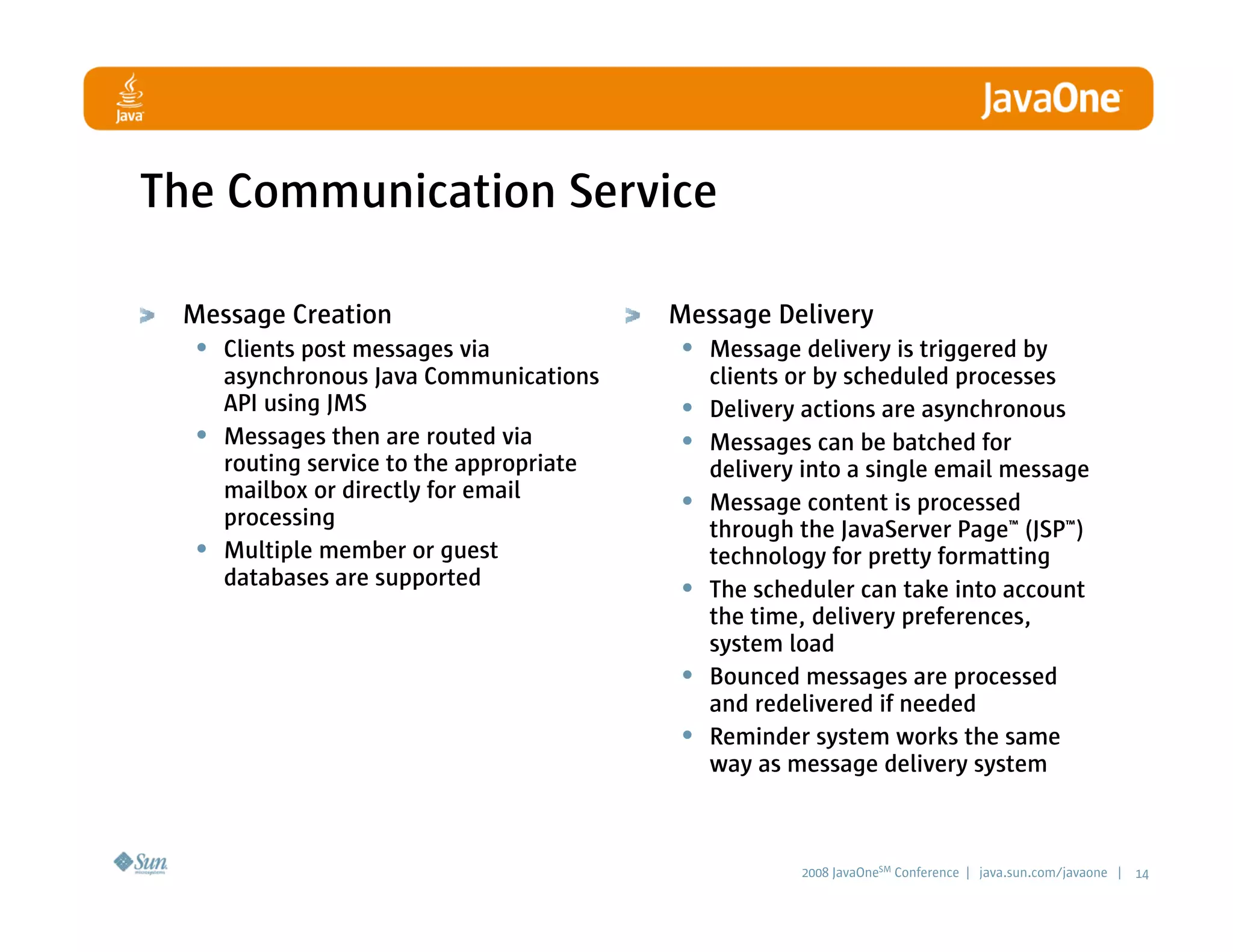
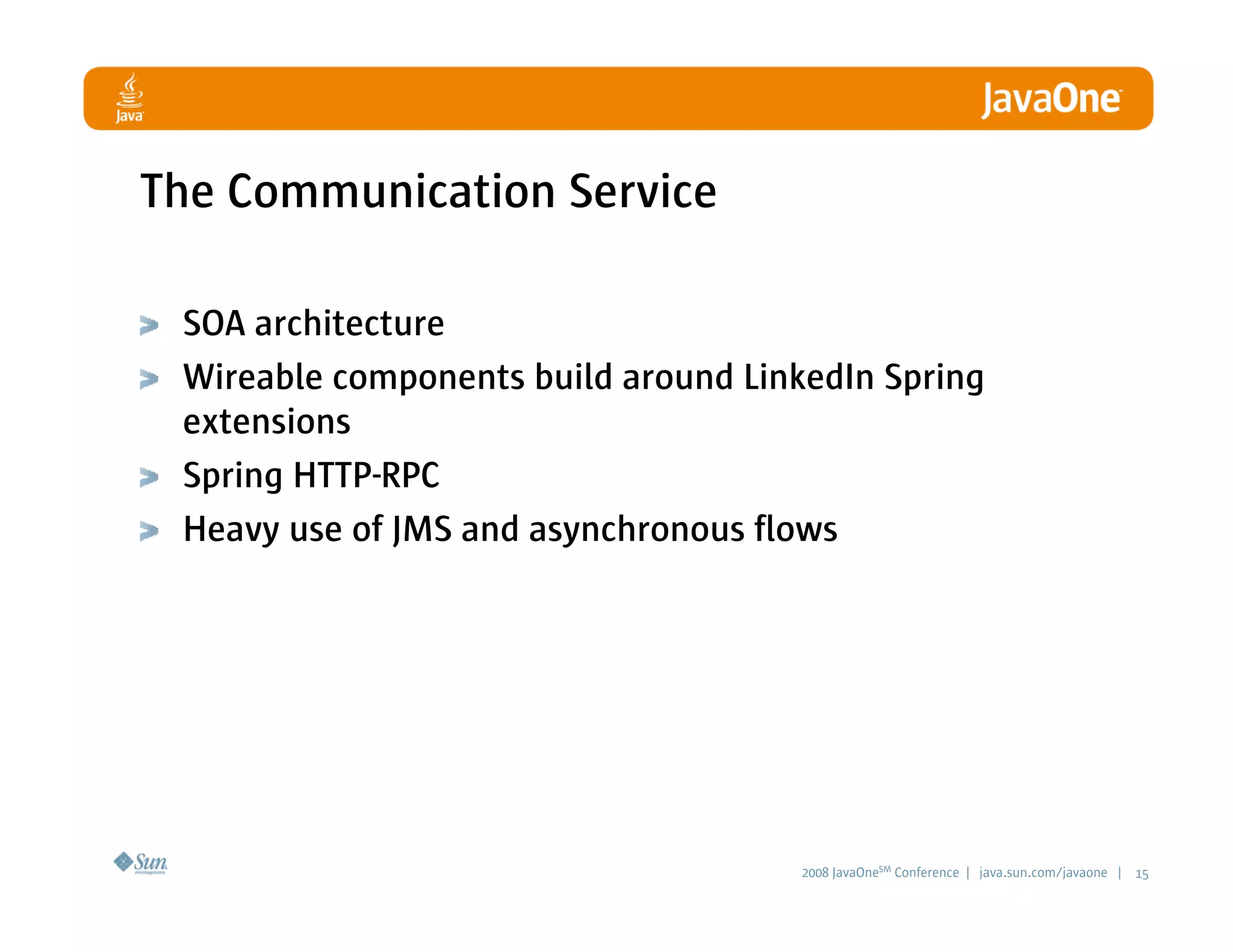
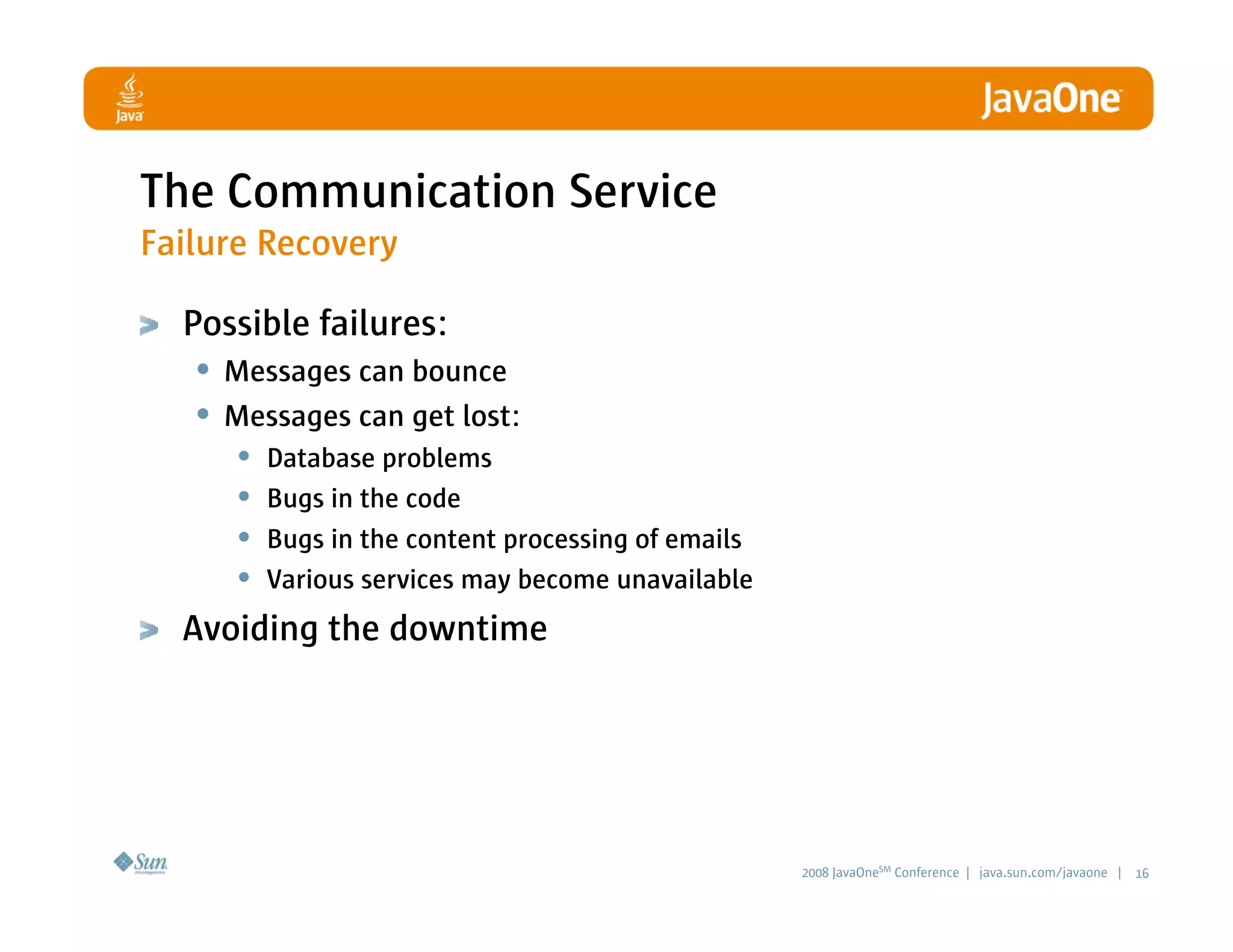
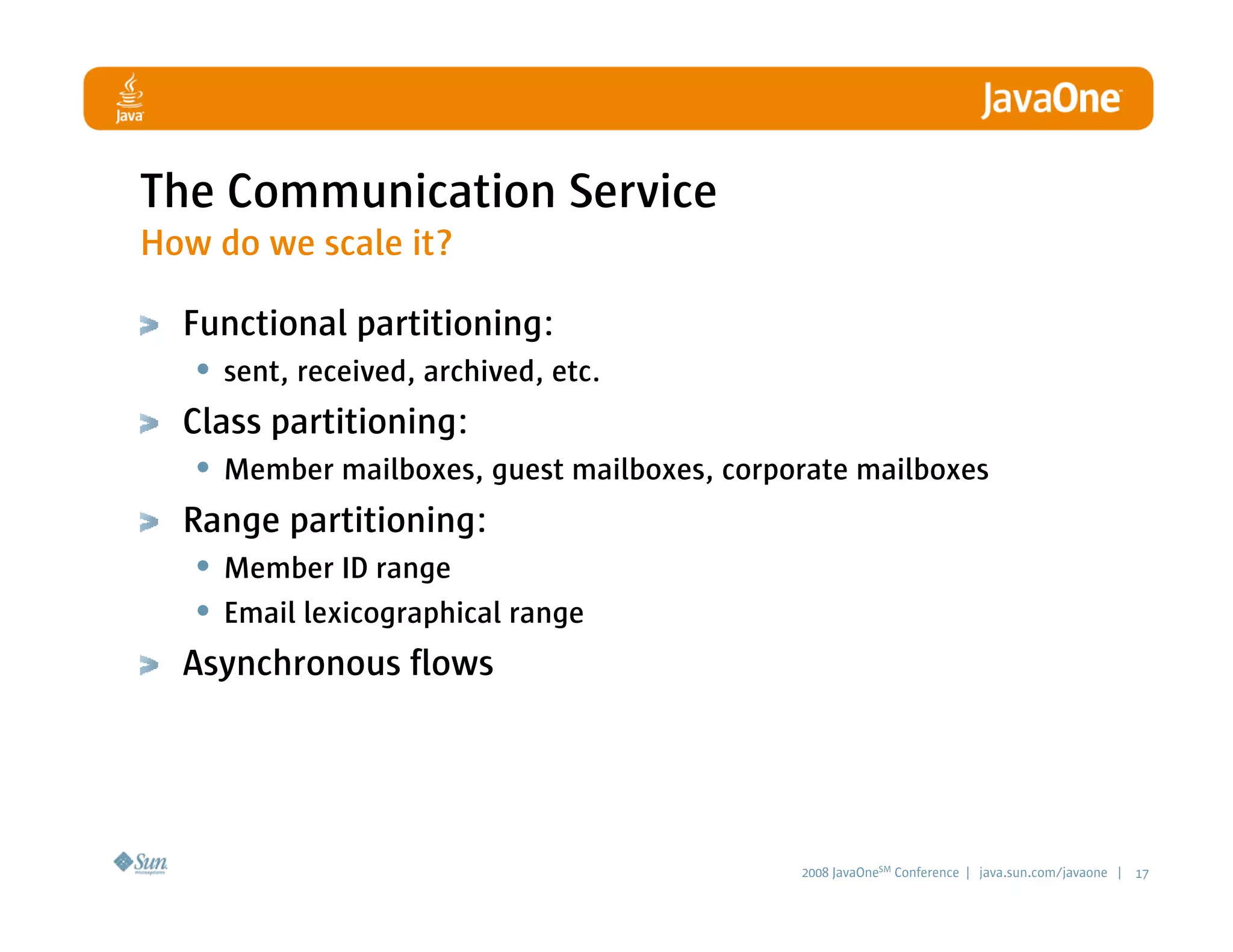
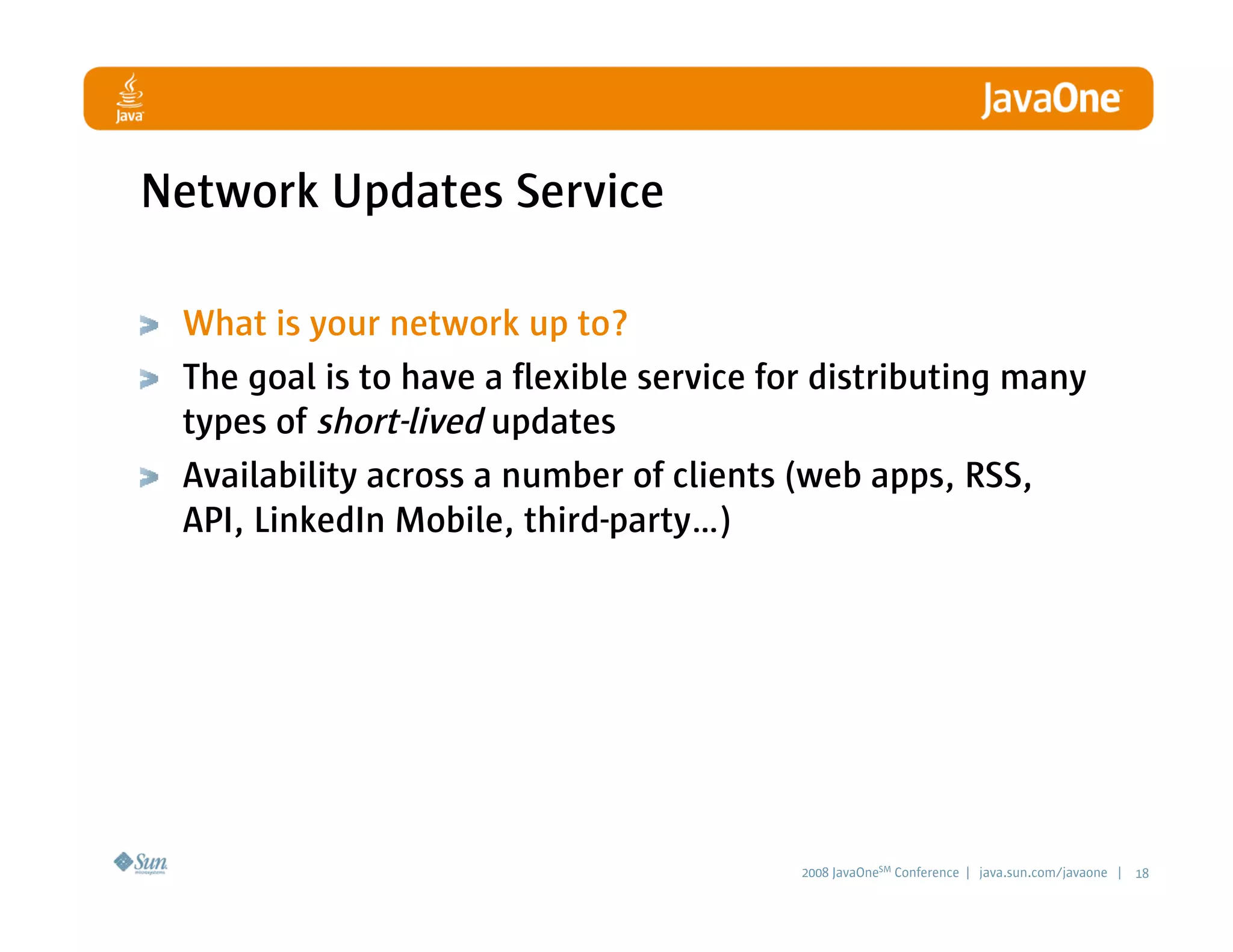
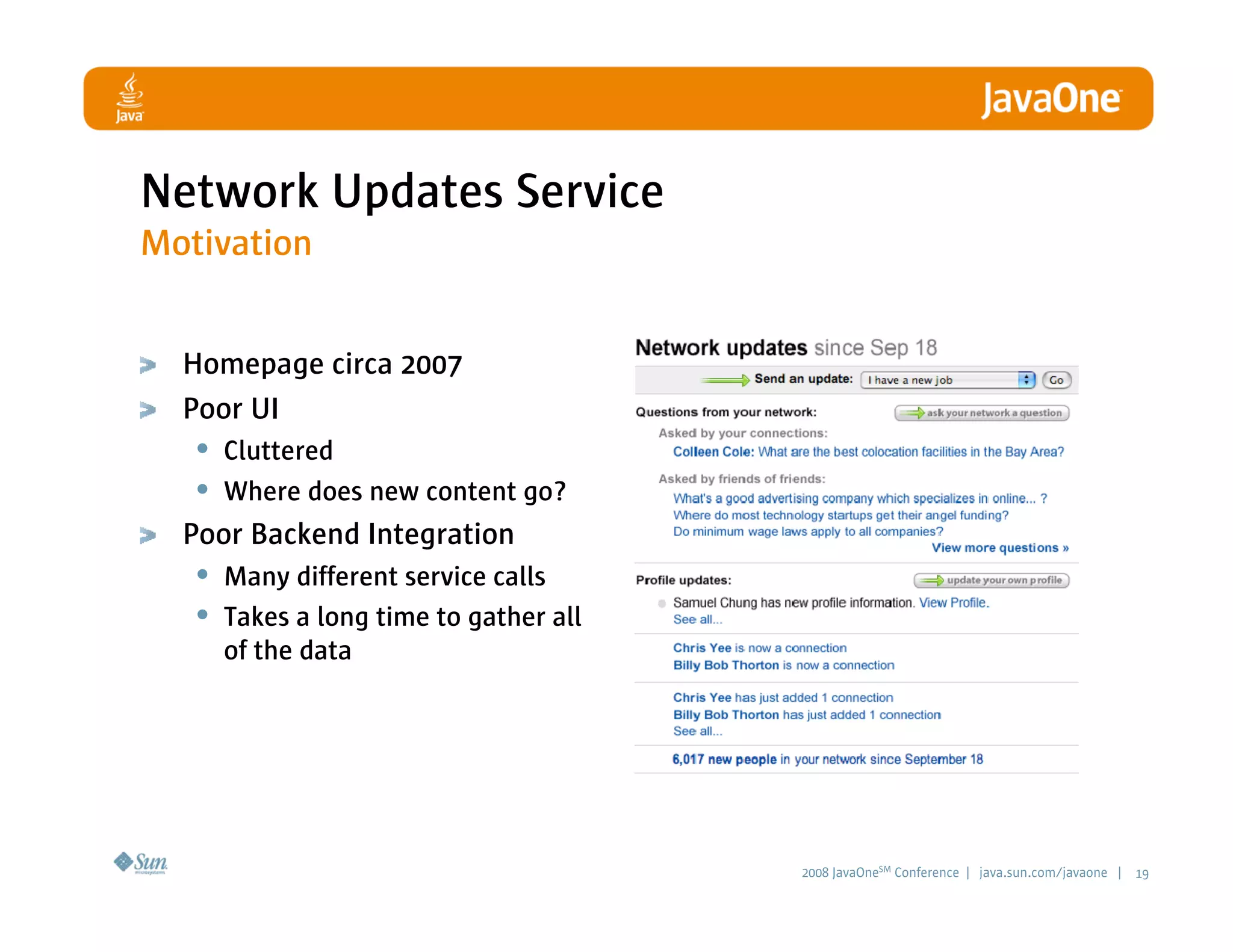
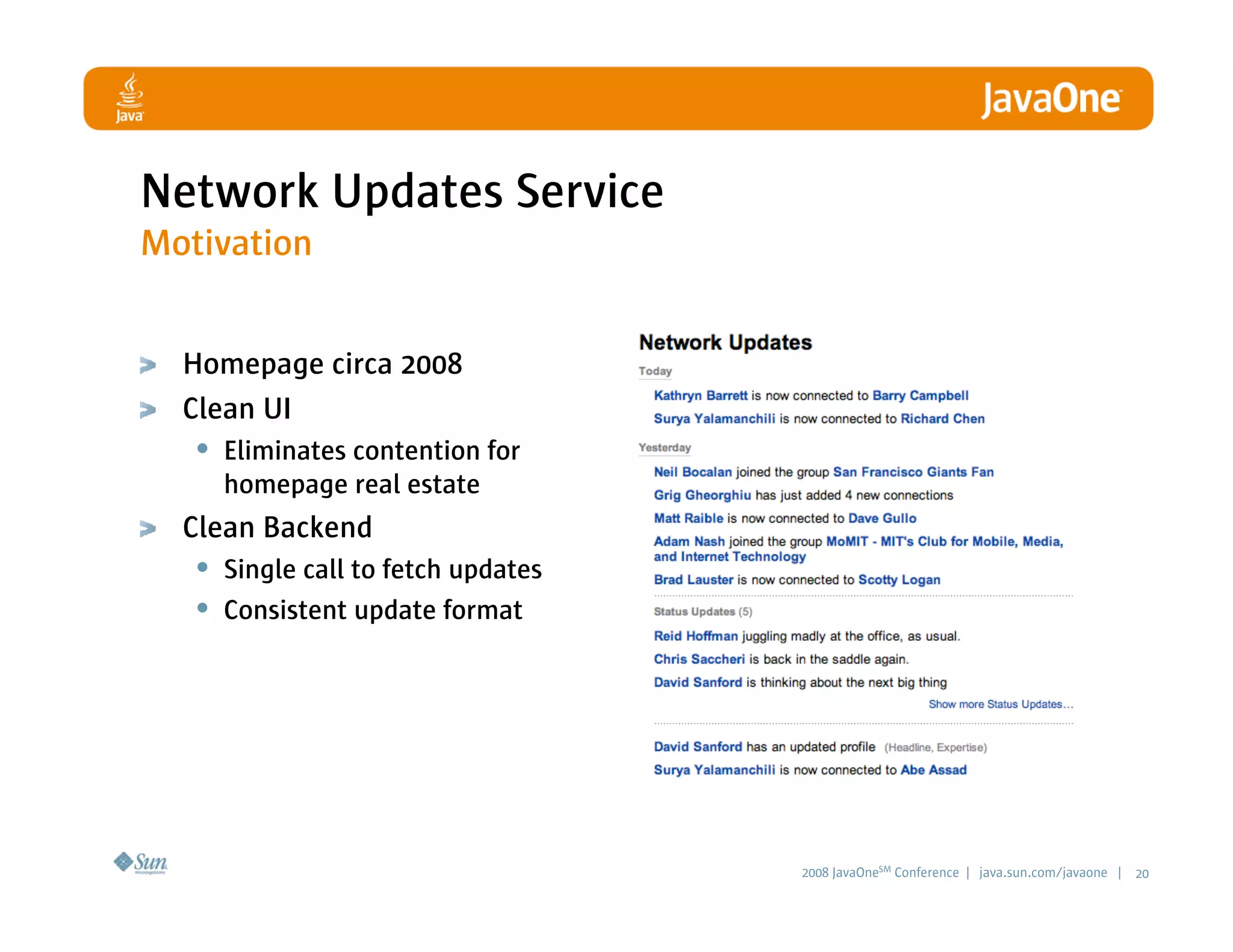
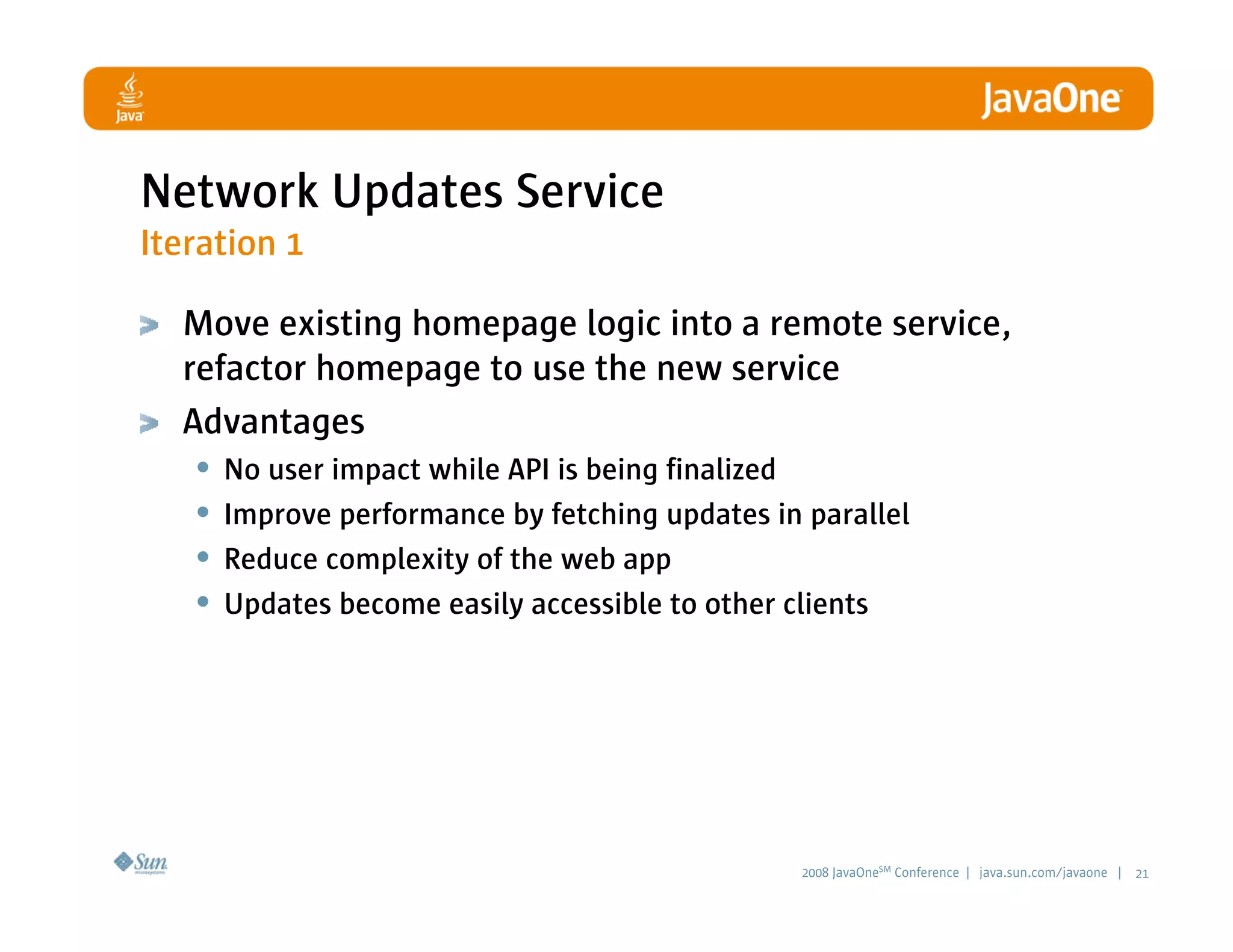
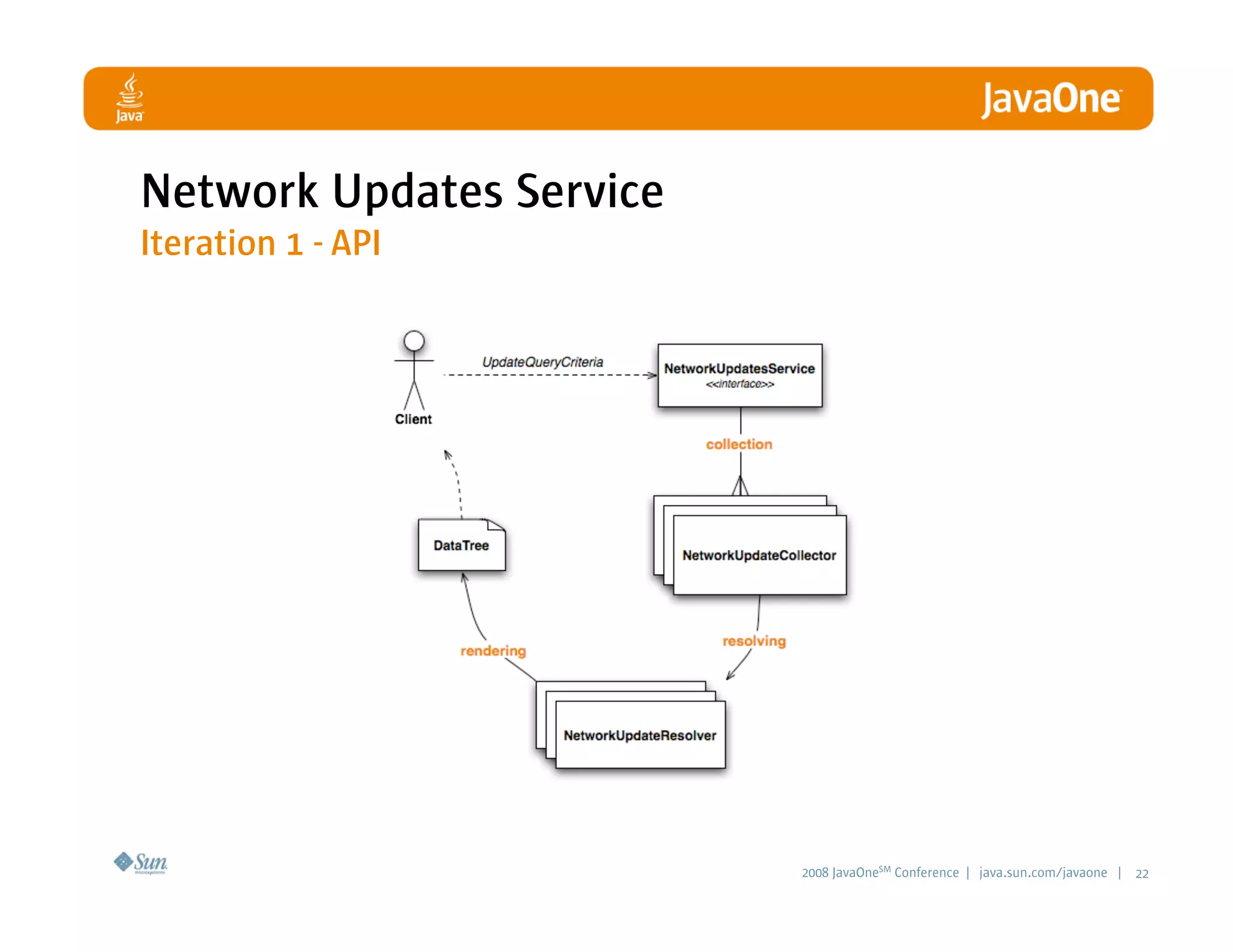
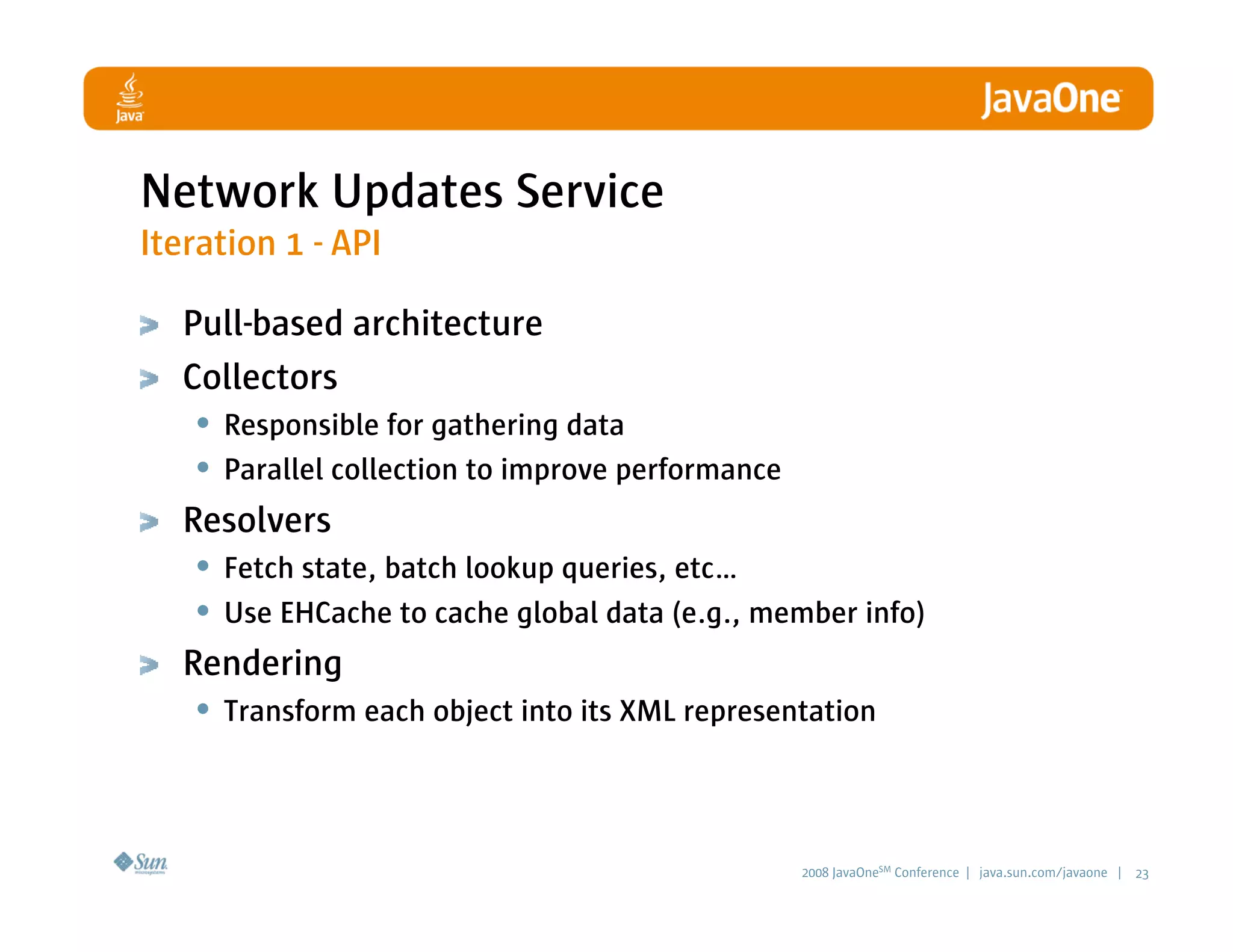
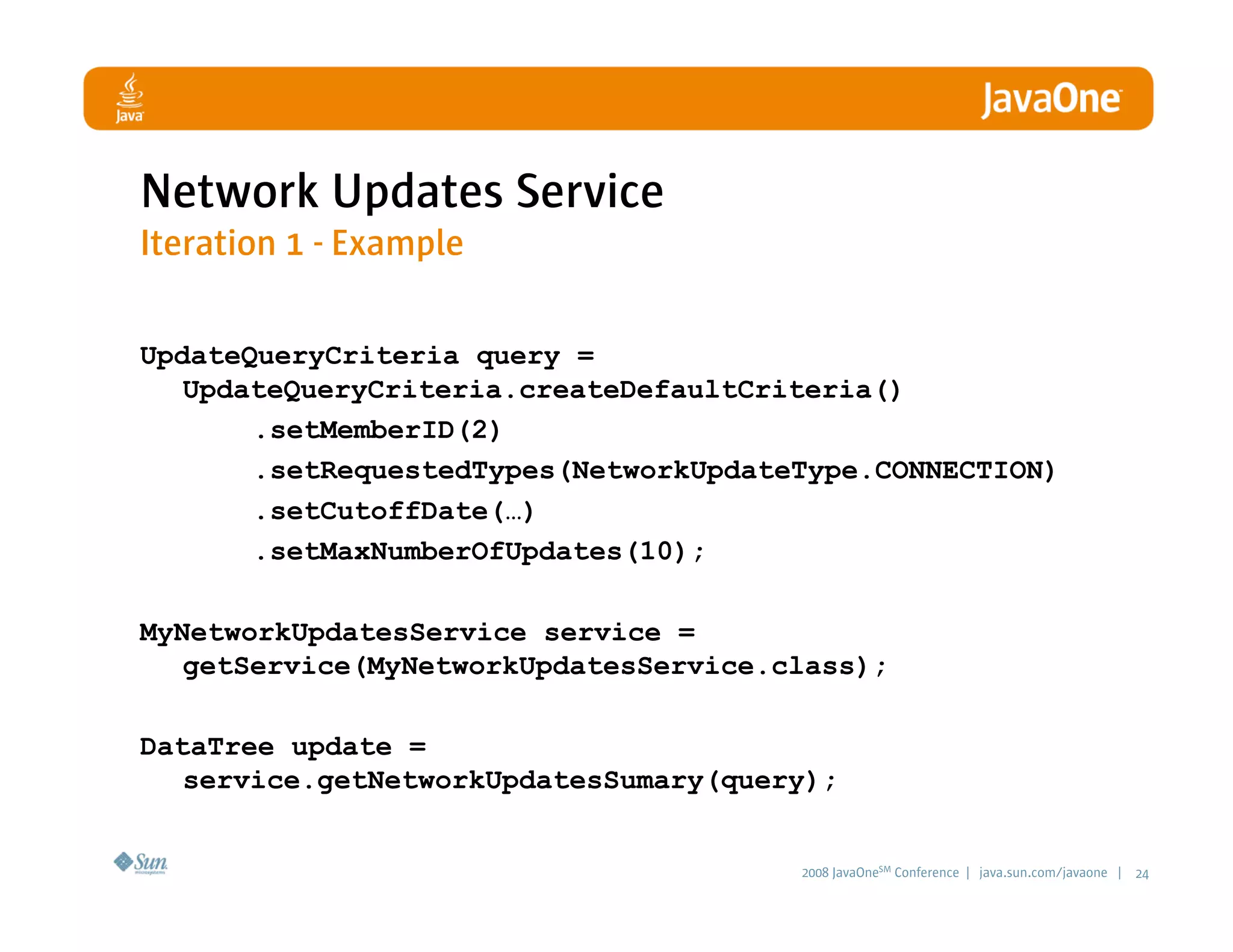
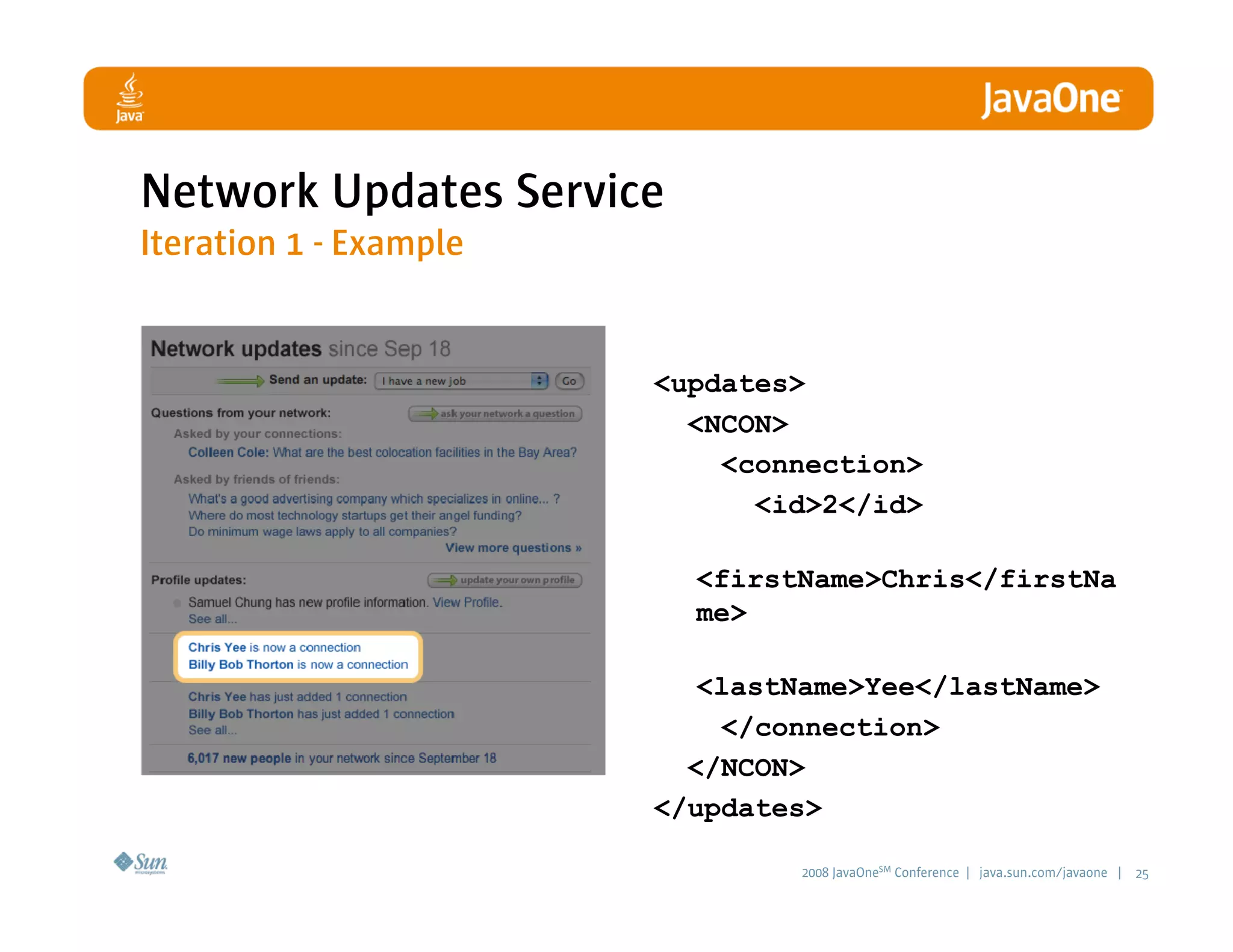
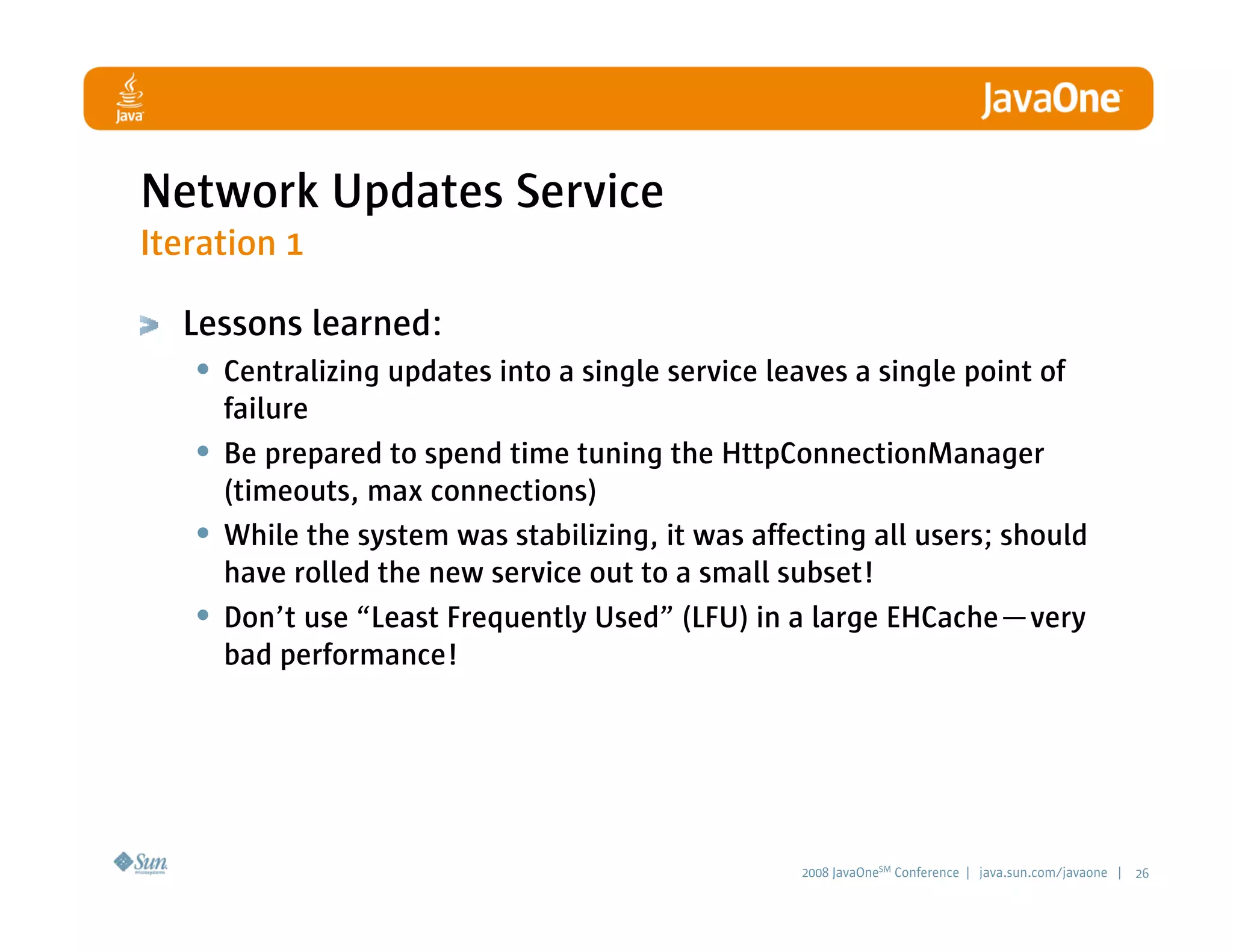
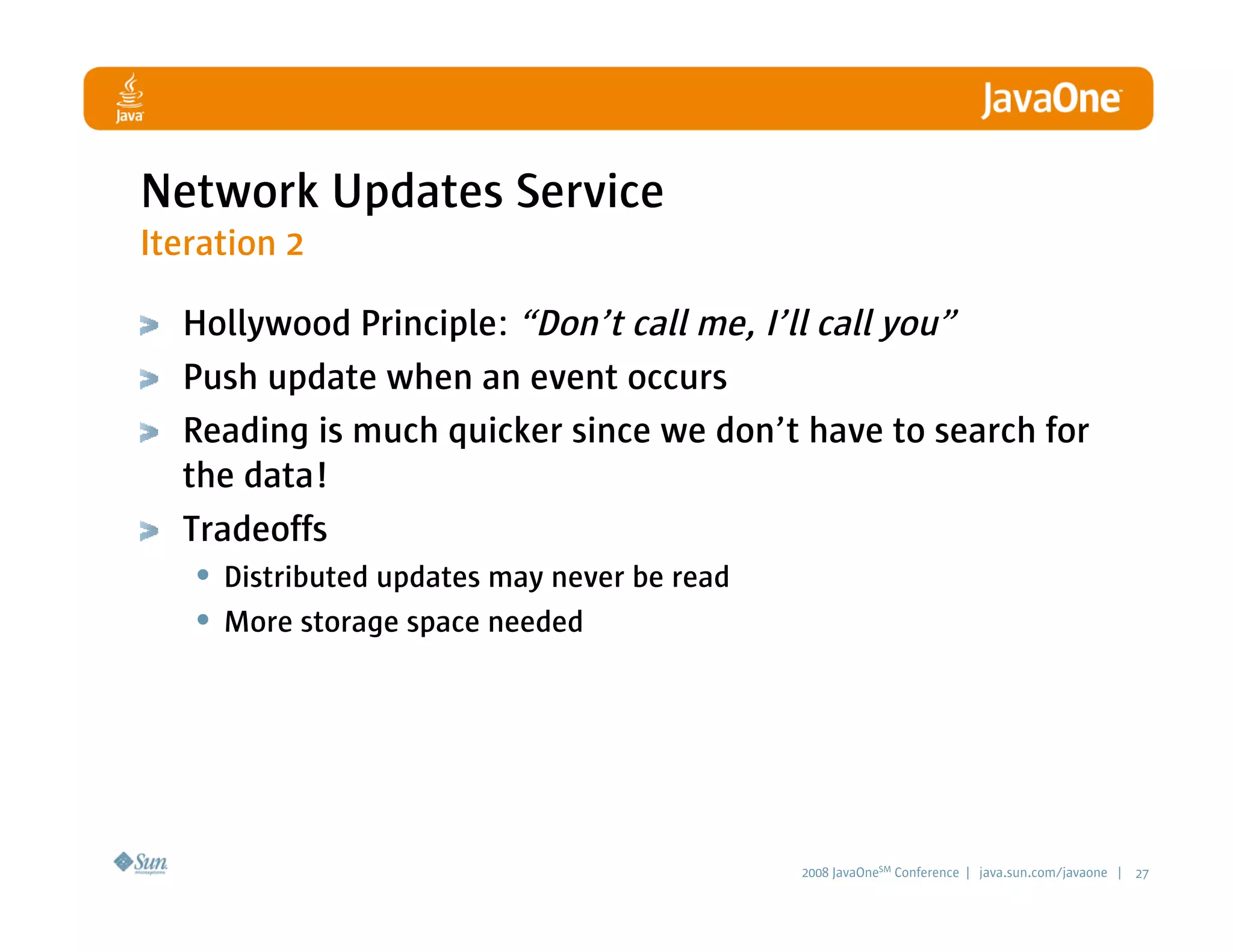
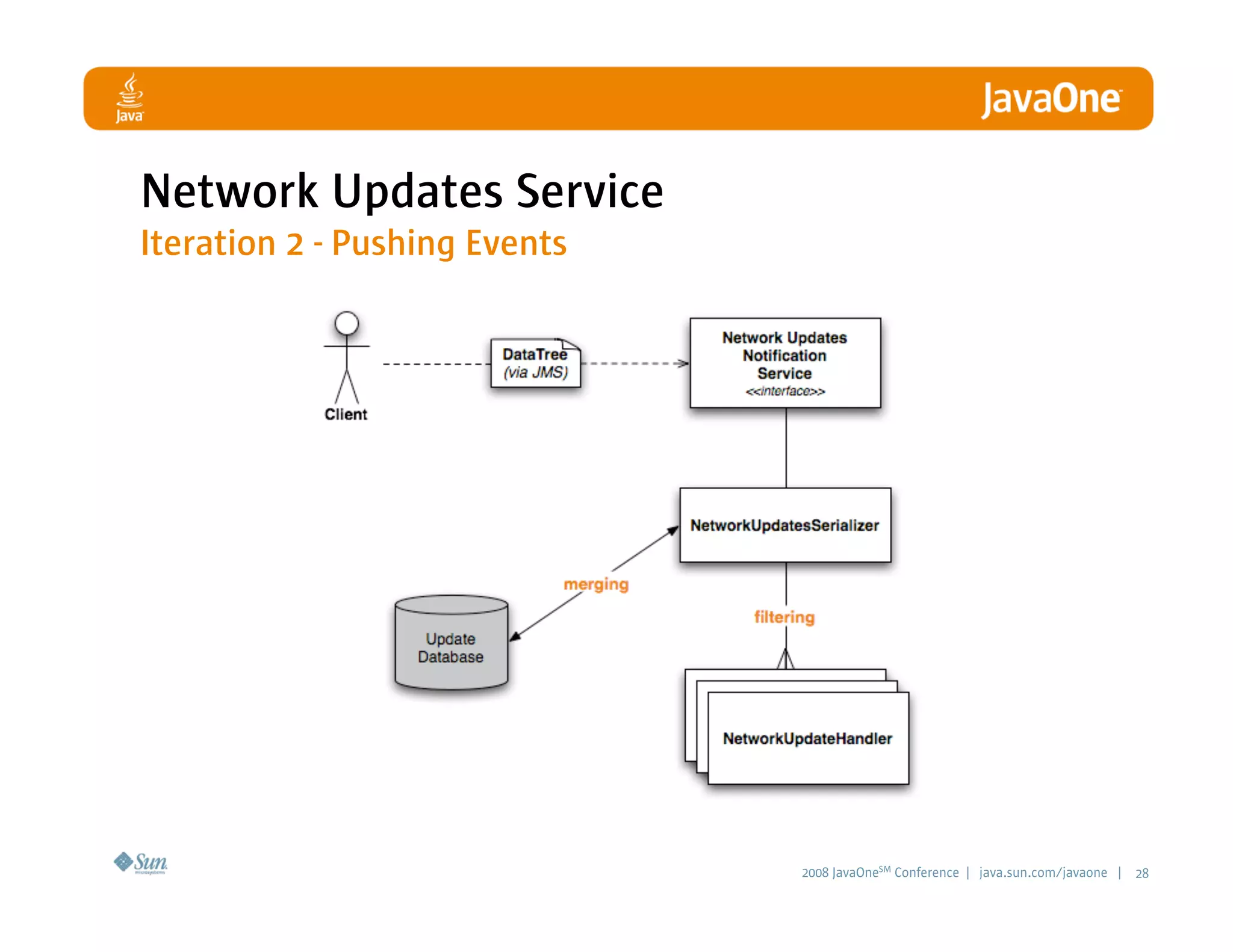
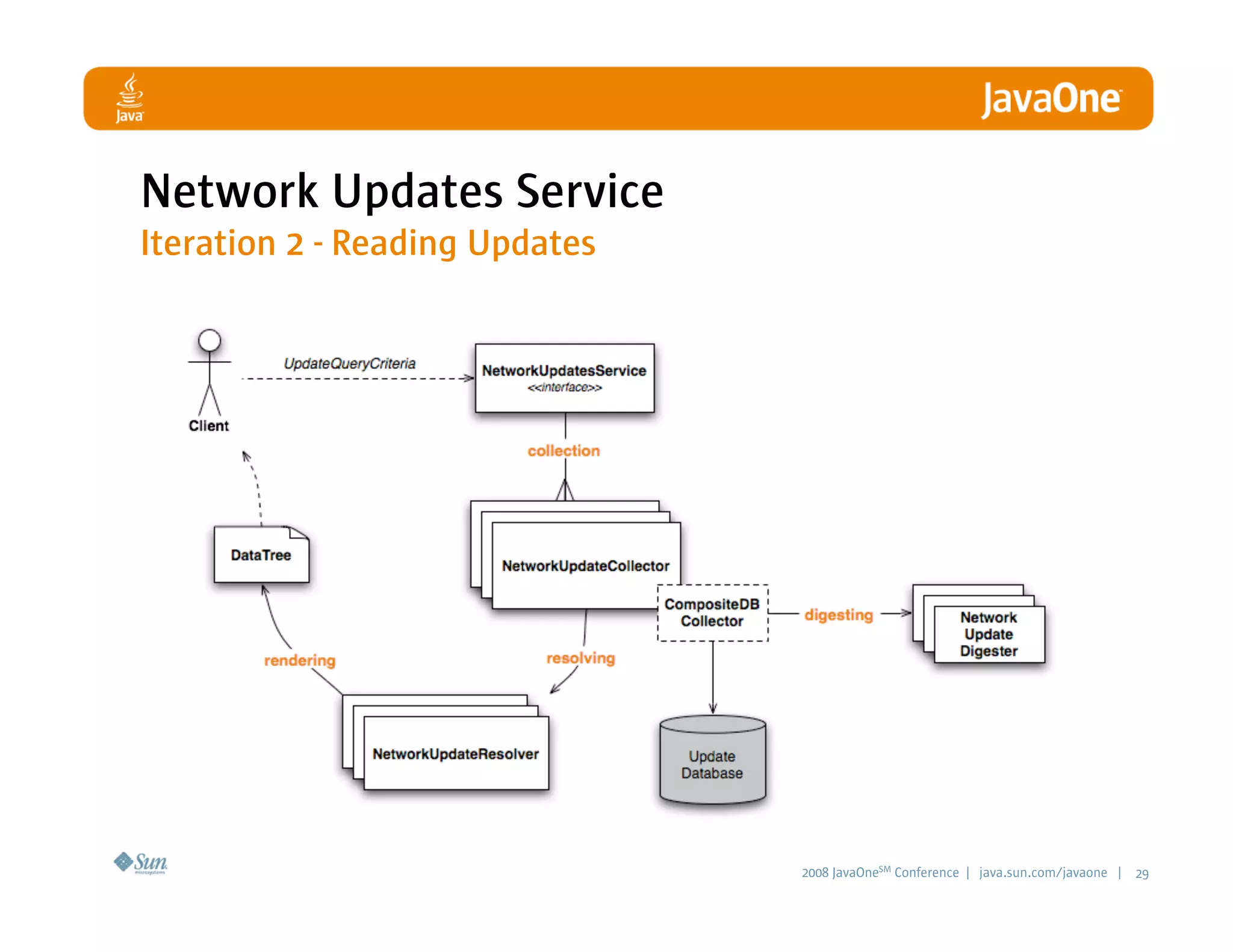
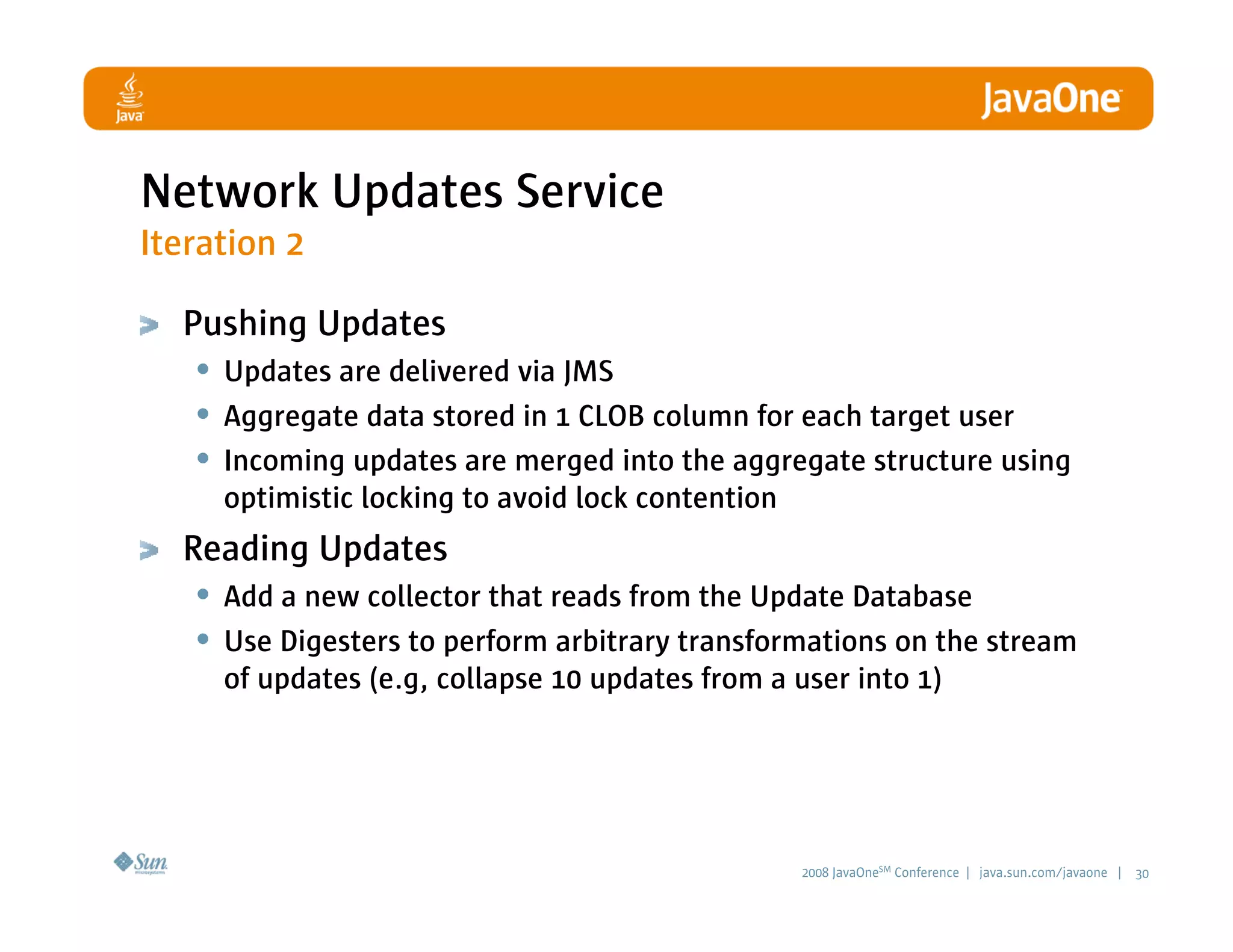
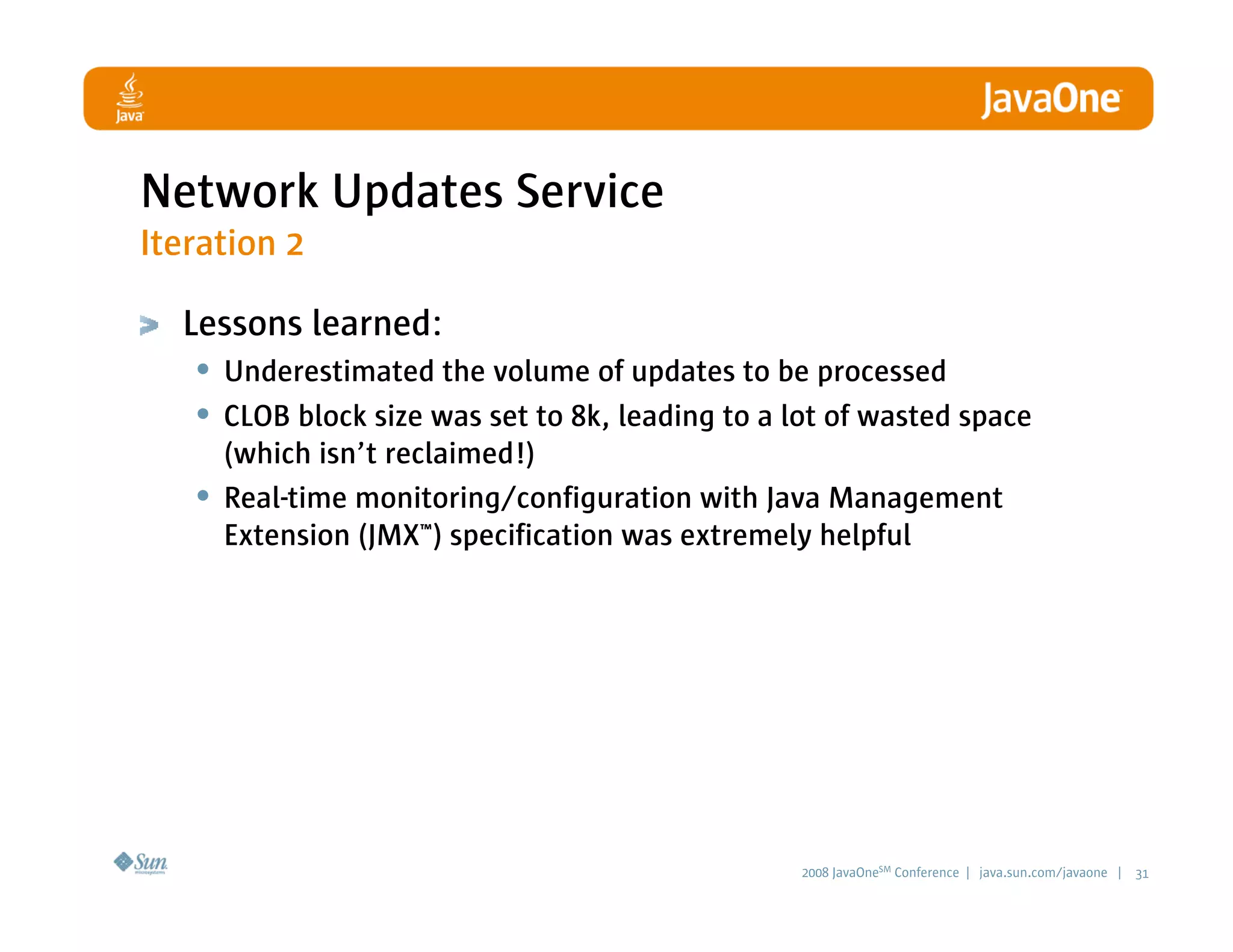
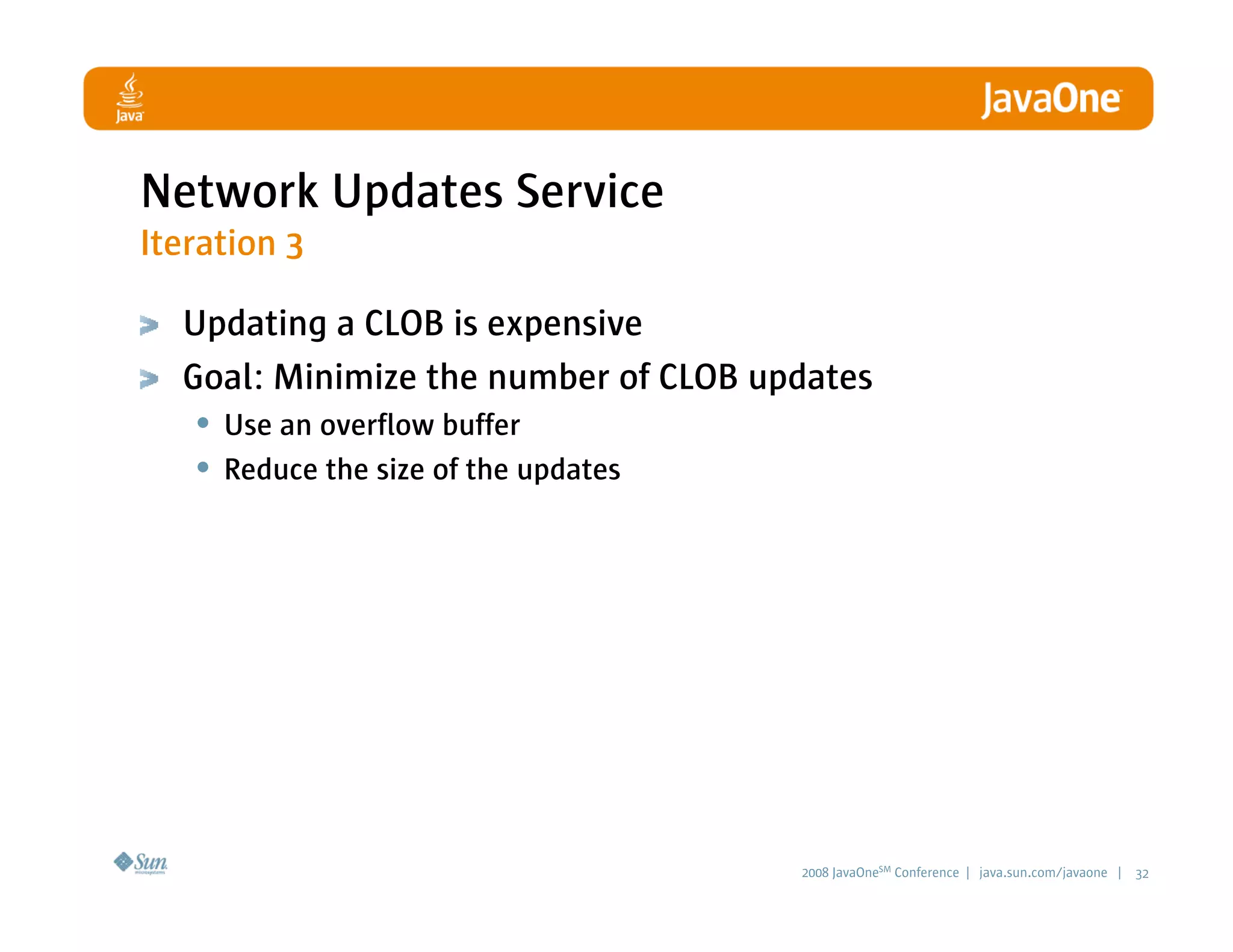
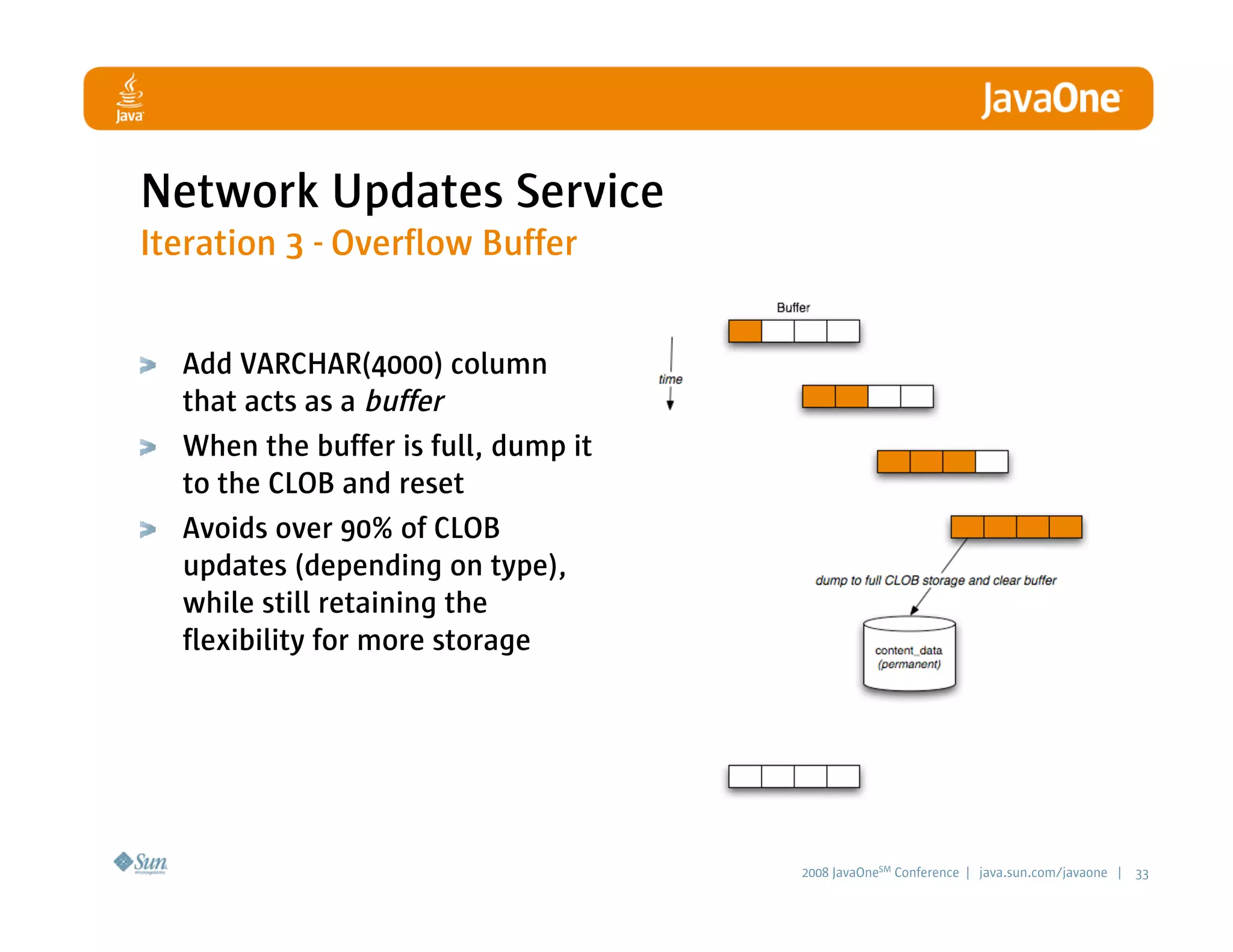
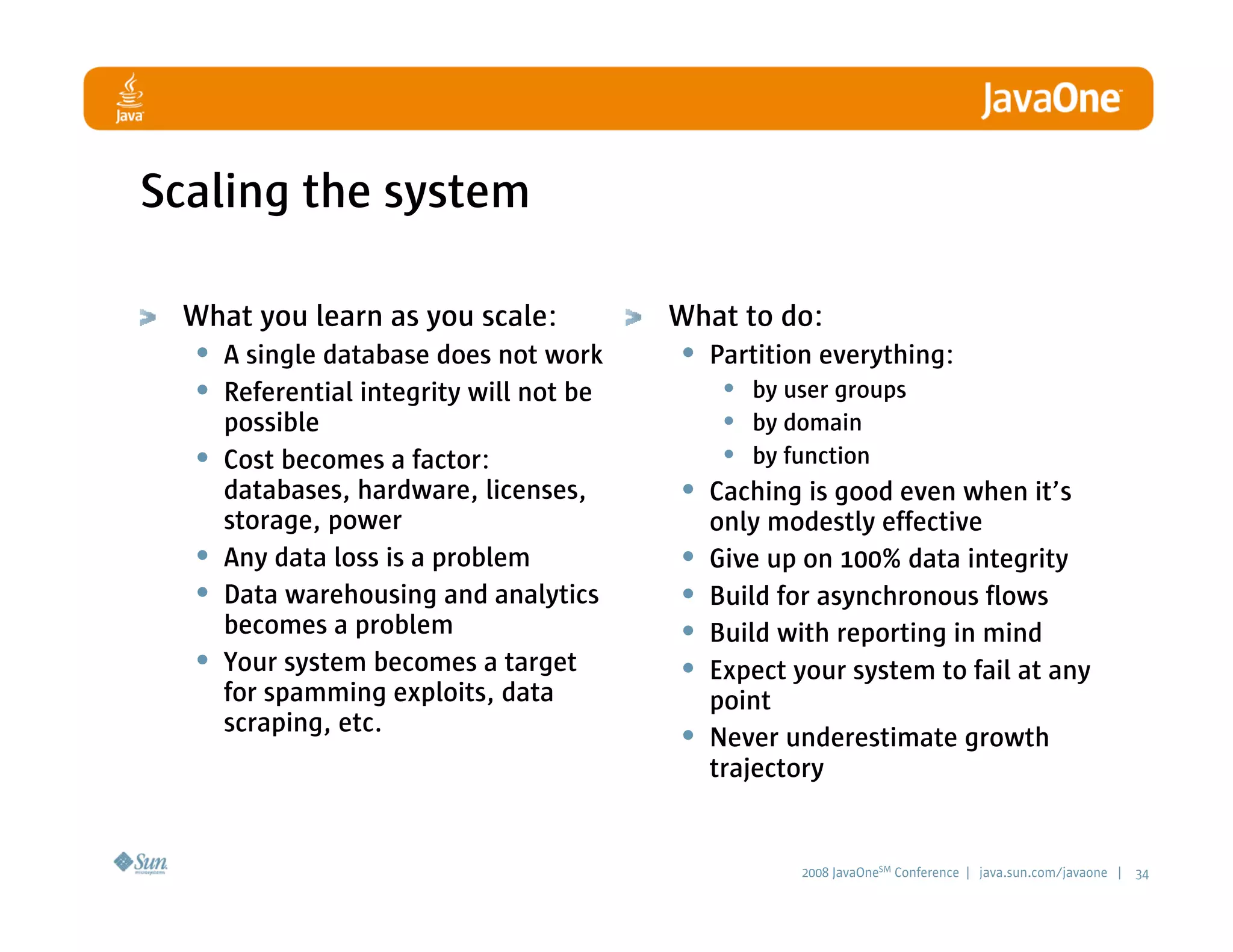
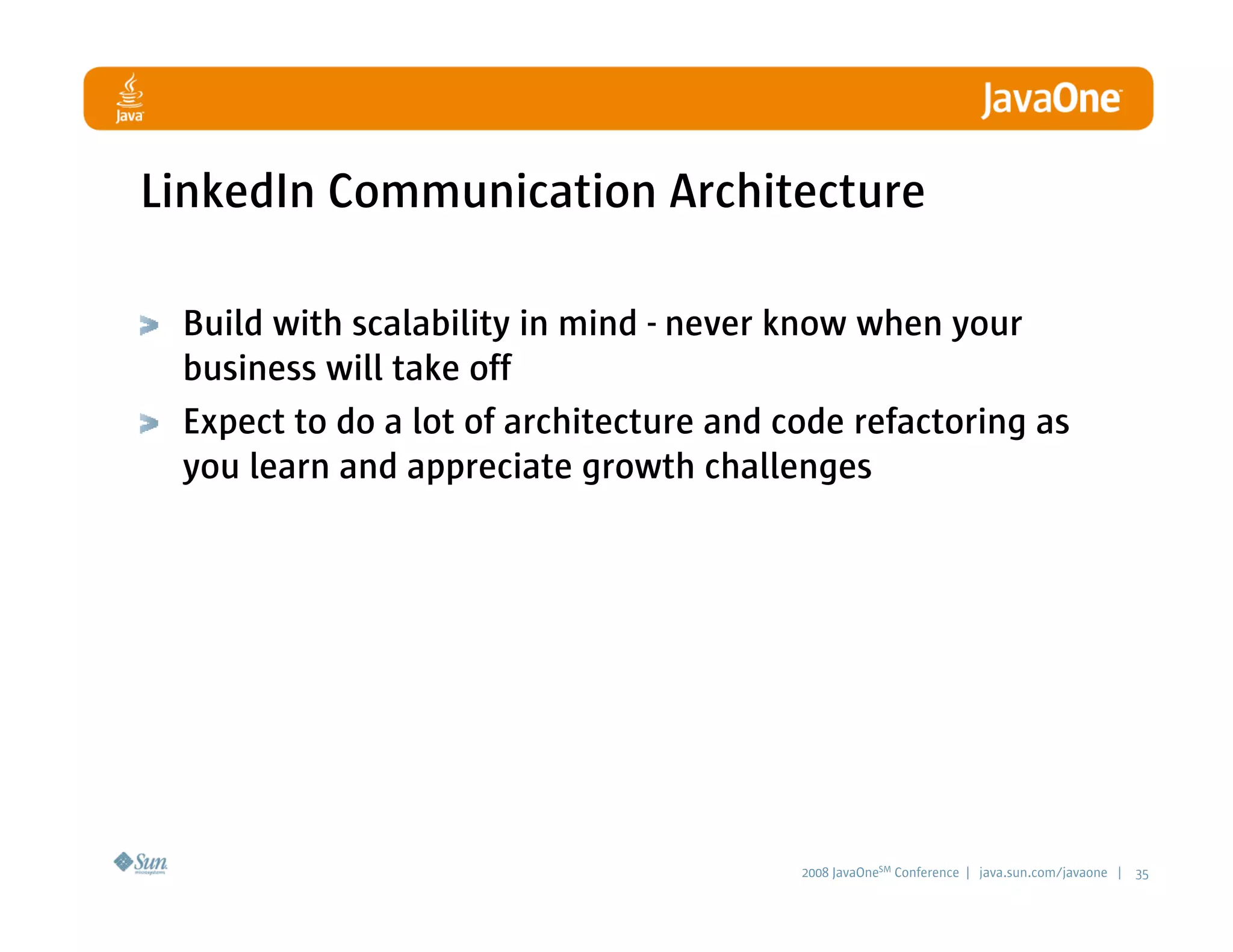
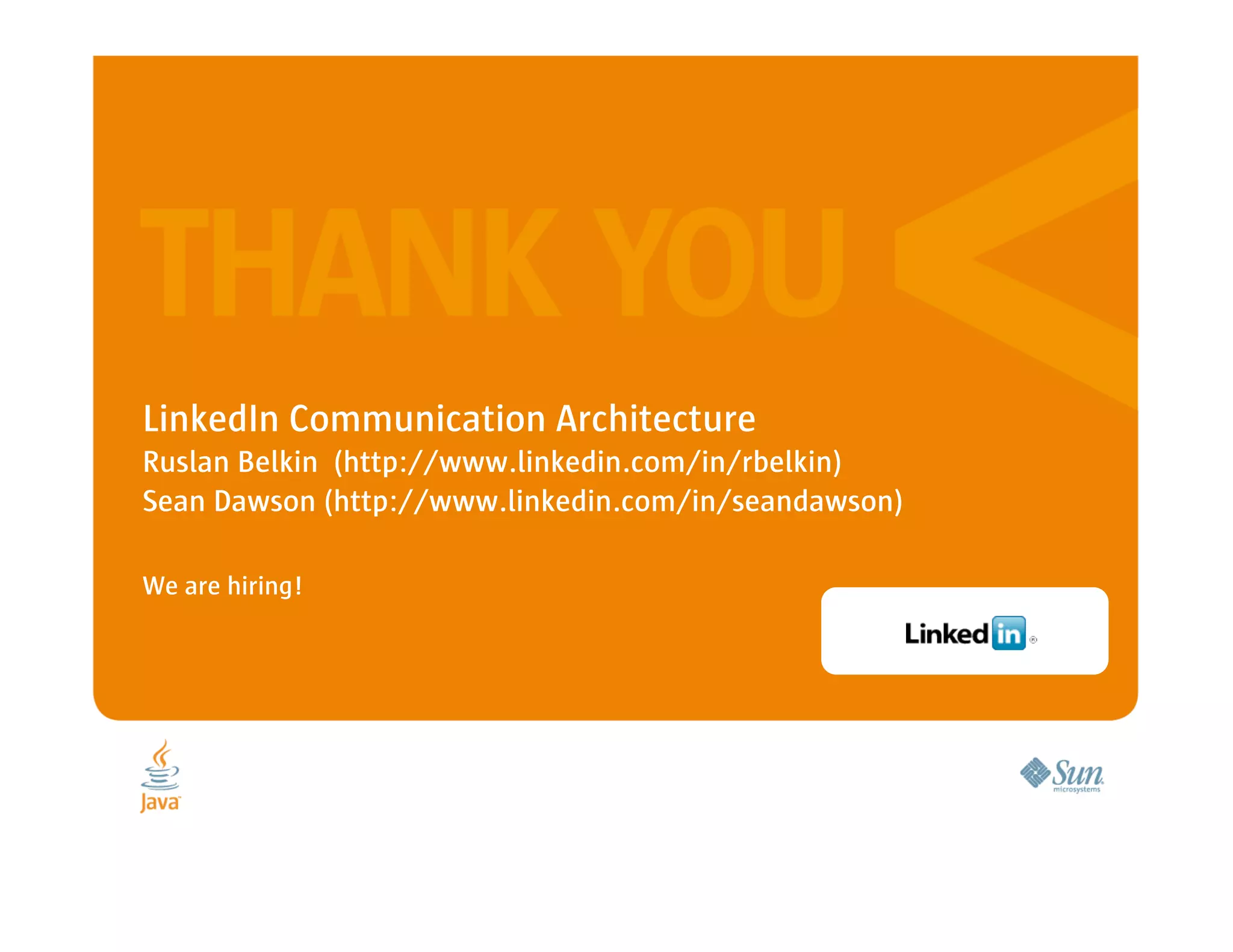
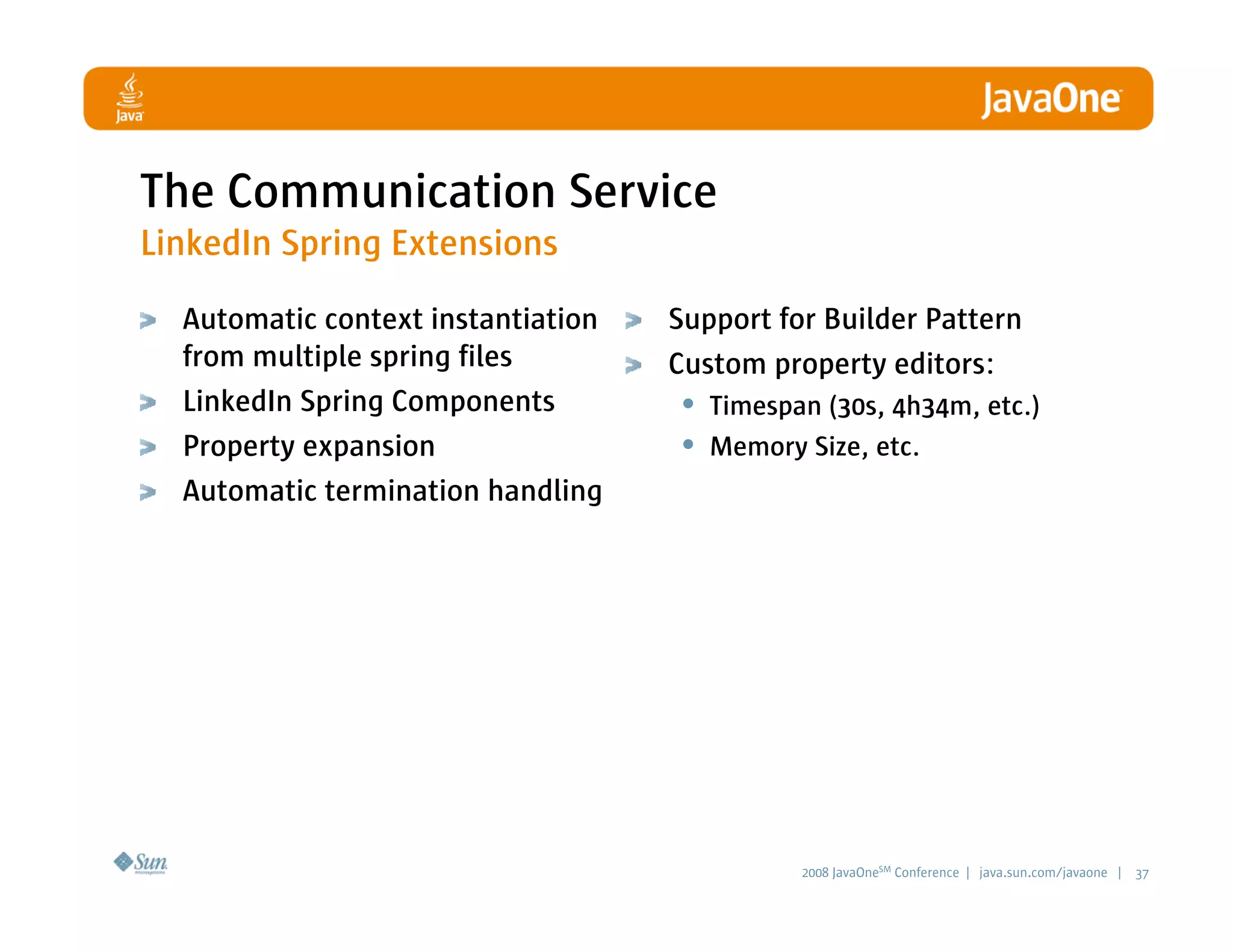
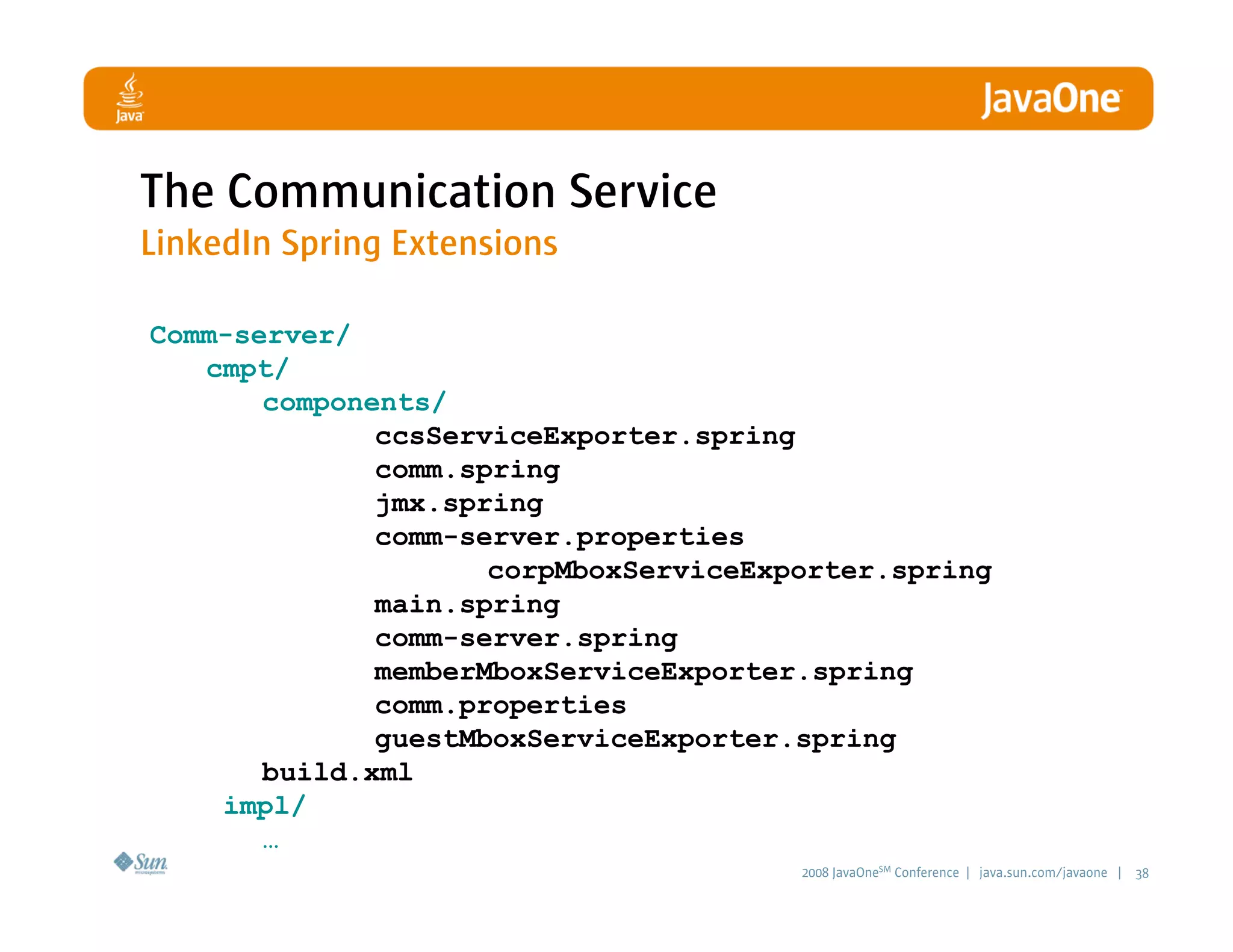
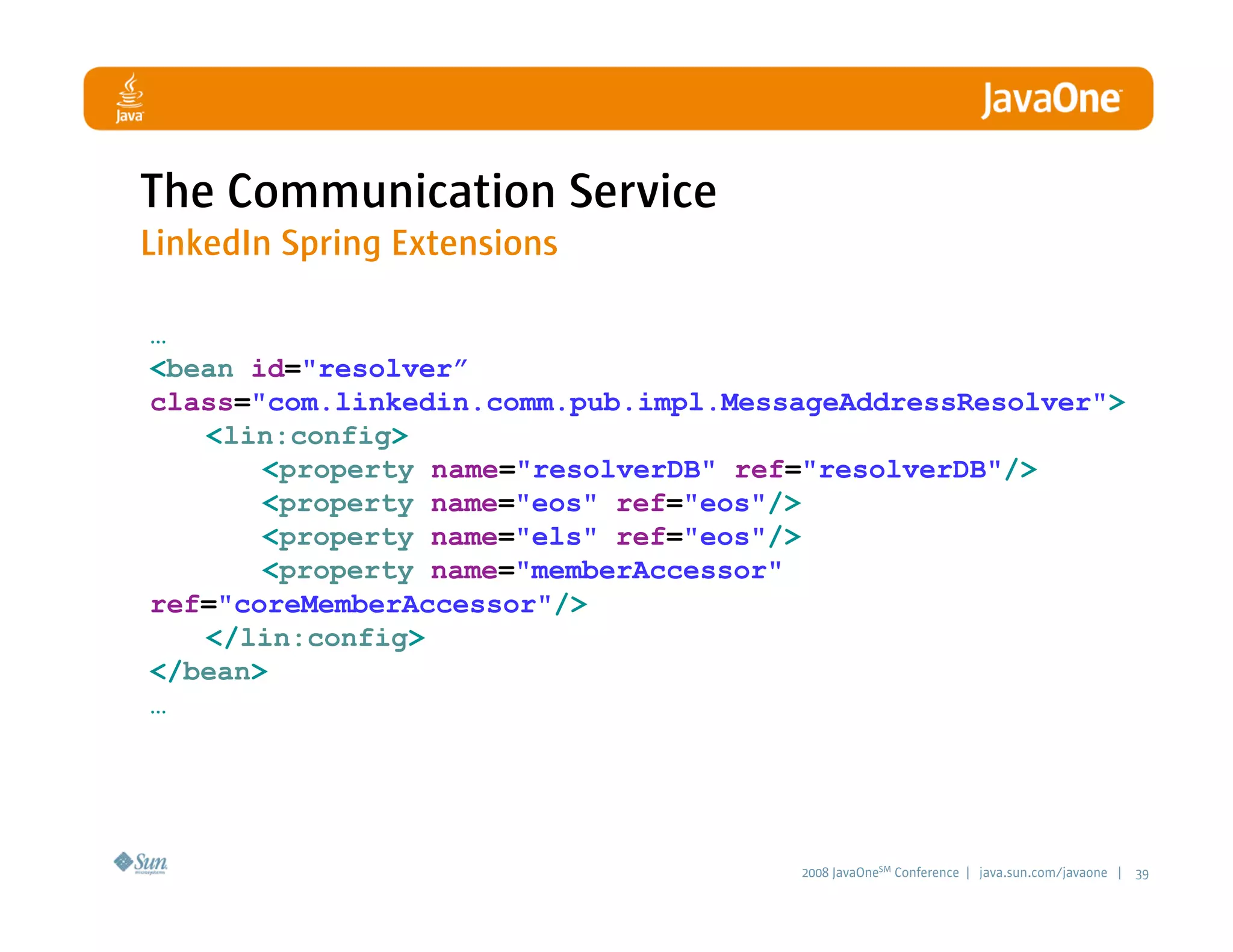
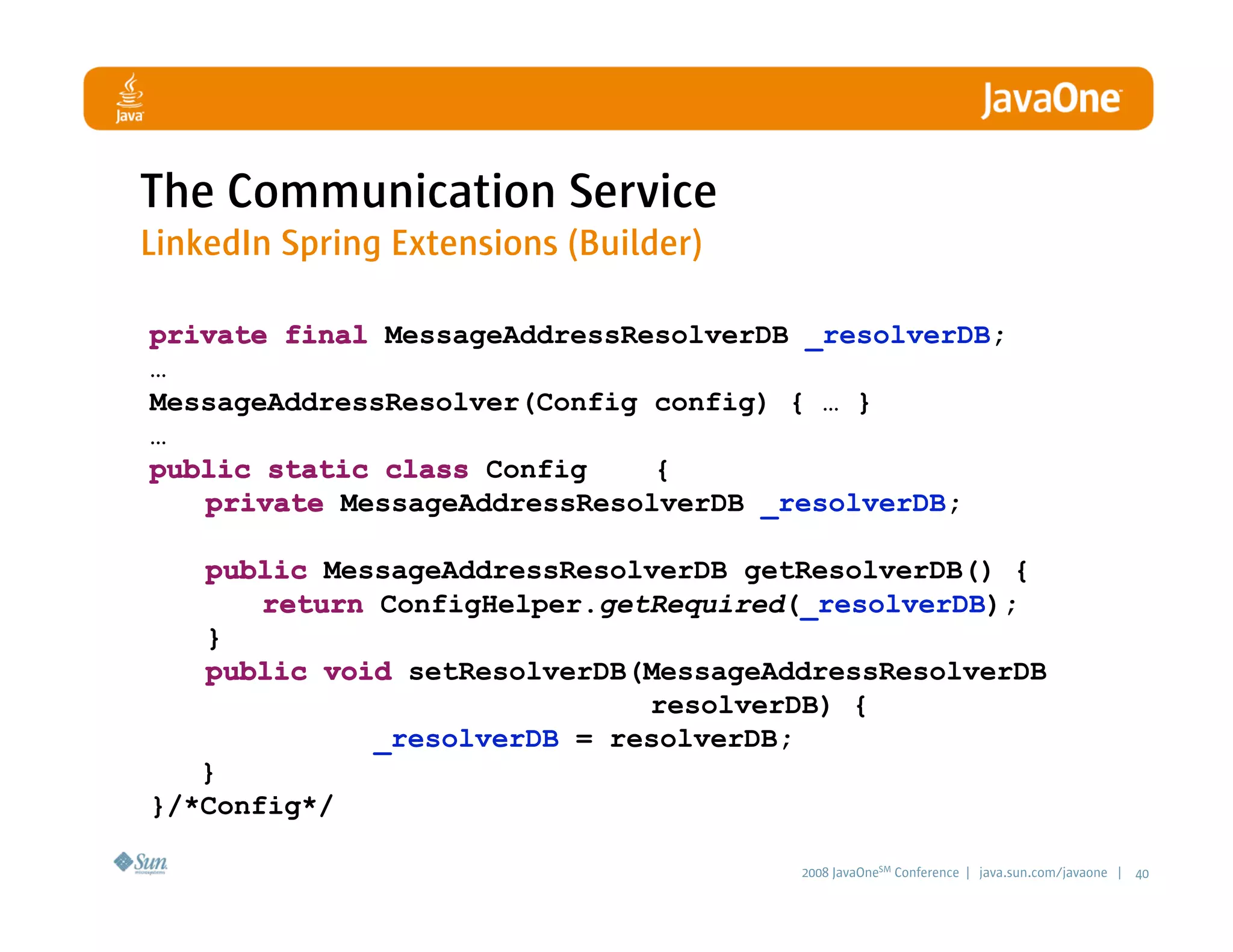
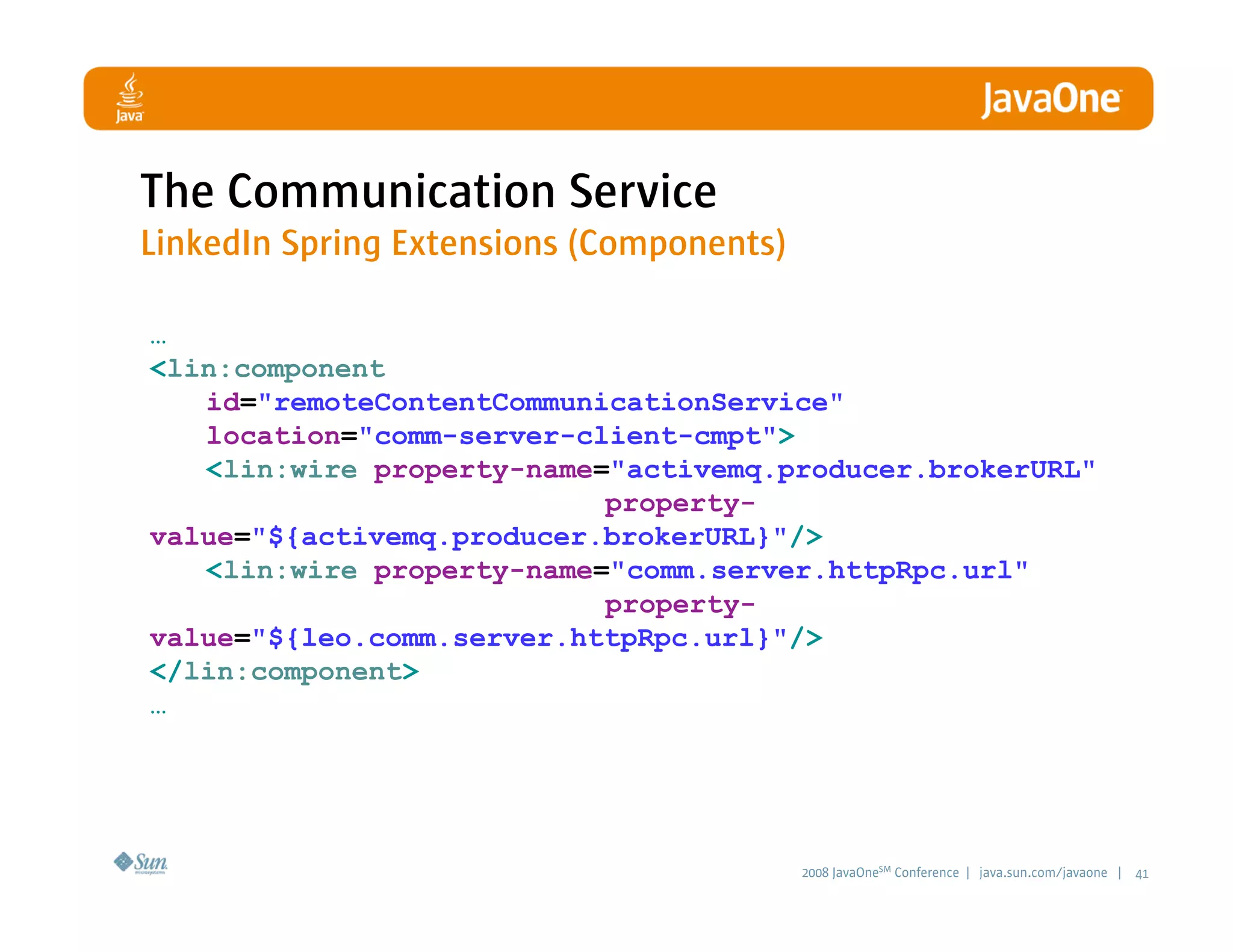

The document discusses LinkedIn's communication architecture and network updates service. It describes how LinkedIn built scalable communication platforms to support its large professional network. The system evolved from handling 0 to 22 million members. It uses Java, databases like Oracle and MySQL, application servers like Tomcat and Jetty, and technologies like ActiveMQ, Lucene and Spring. The communication service handles messages and email delivery while the network updates service distributes short-lived notifications across LinkedIn's various clients and services.









































Introduction to LinkedIn's scalable communication platform, its focus on sharing evolution and experiences behind its success.
Presenting critical metrics: 22M members, 130M connections. Infrastructure includes Sun hardware, Java programming, Tomcat, MySQL, and ActiveMQ.
Details of the communication service: message storage, inbox messages, actionable content, and network updates with event notifications.
How messages are created and delivered within the platform, utilizing Java API, asynchronous flows, and error handling features.
Strategies and methods employed for scaling the communication service using functional and class partitioning.
Motivation behind the network updates service due to UI inadequacies, showcasing iterations for improvement and backend integration.
Focus on API evolution with collection and rendering, pushing updates, and lessons learned during iterations to enhance performance.
Insights on challenges from scaling systems, partitioning strategies, and the importance of considering architecture and refactoring.
Focus on LinkedIn Spring Extensions, configuration, and underlying components to manage the communication service effectively.